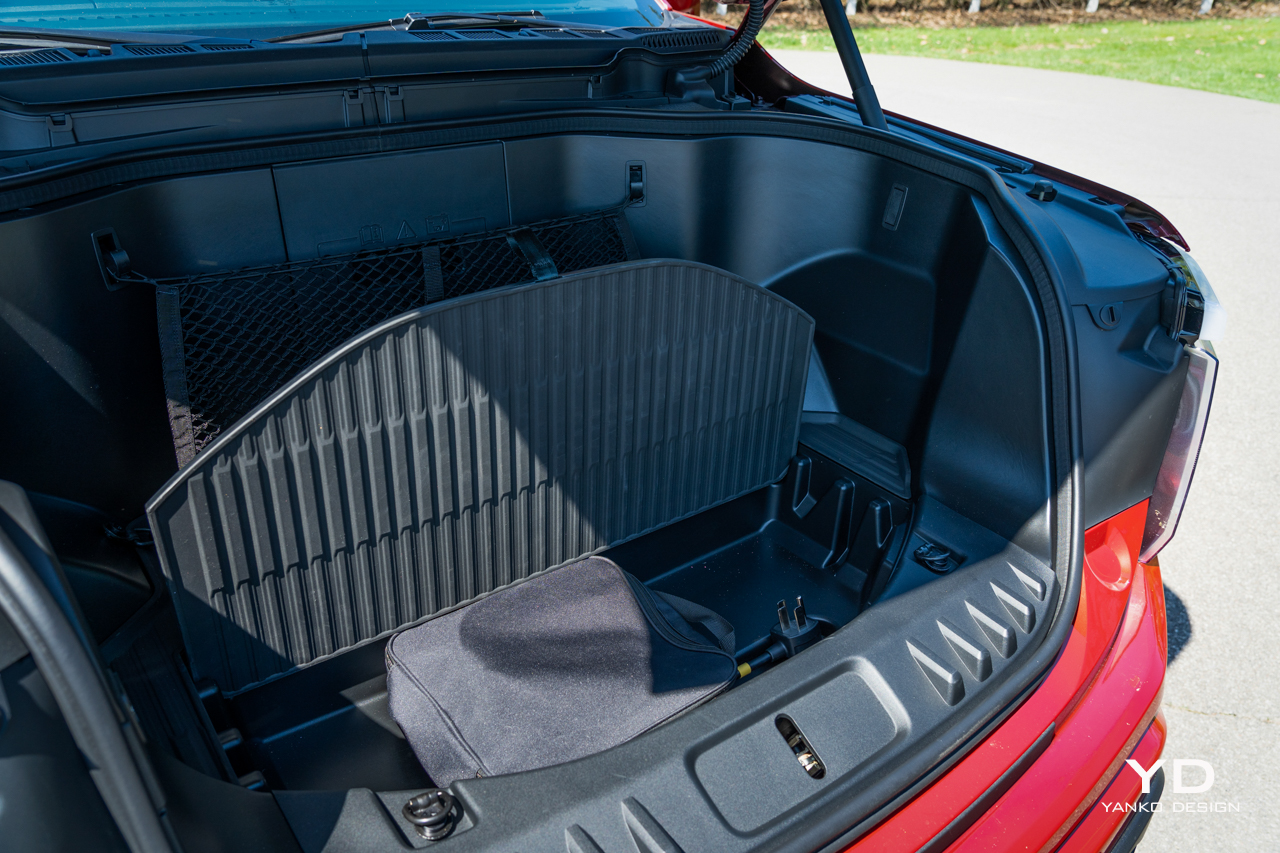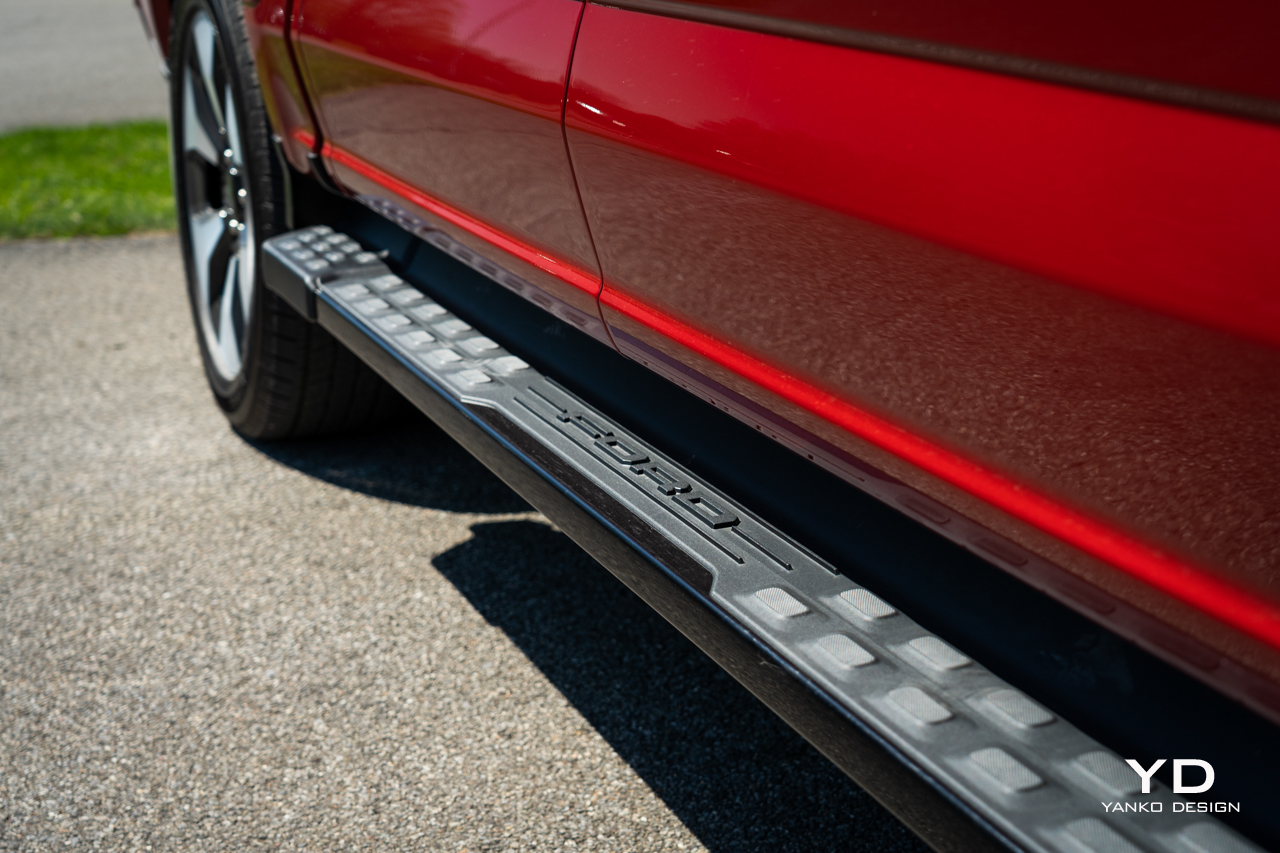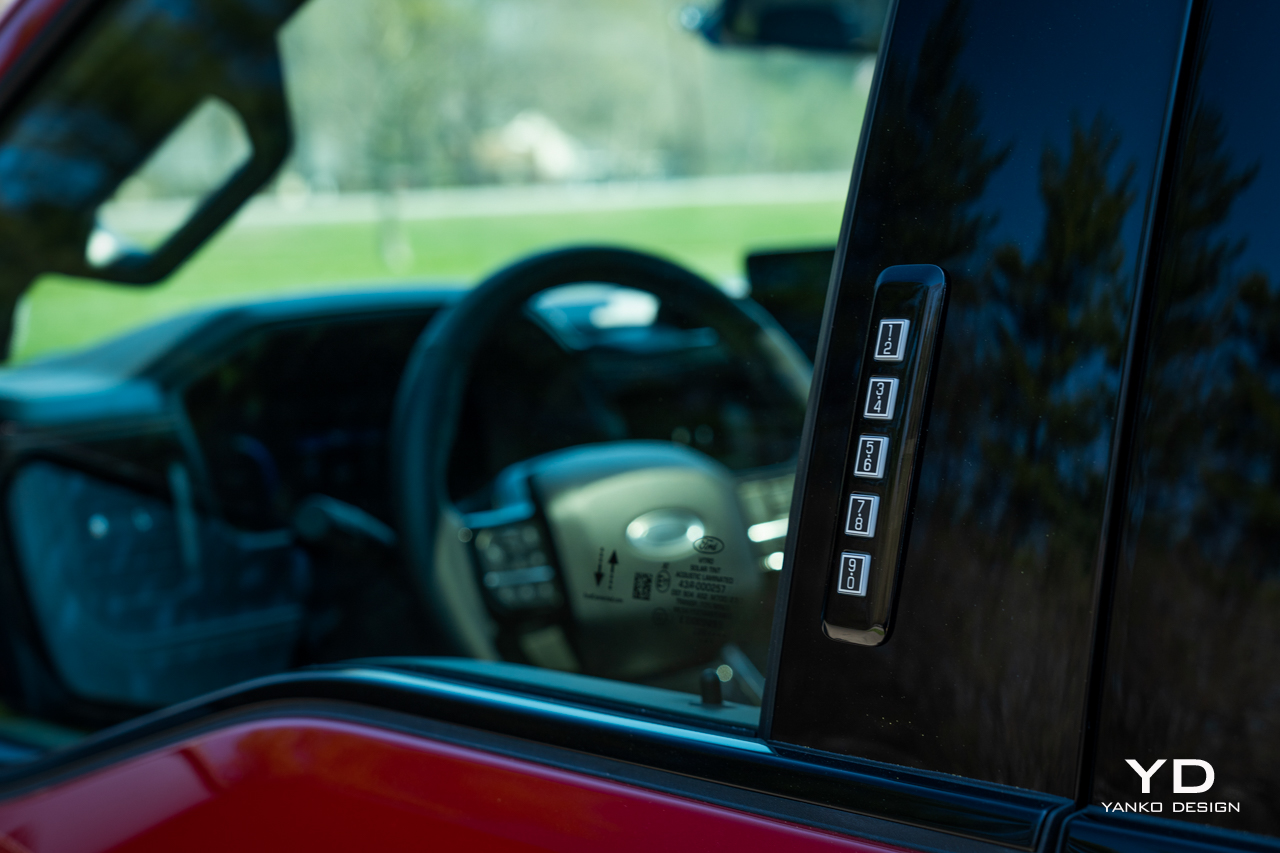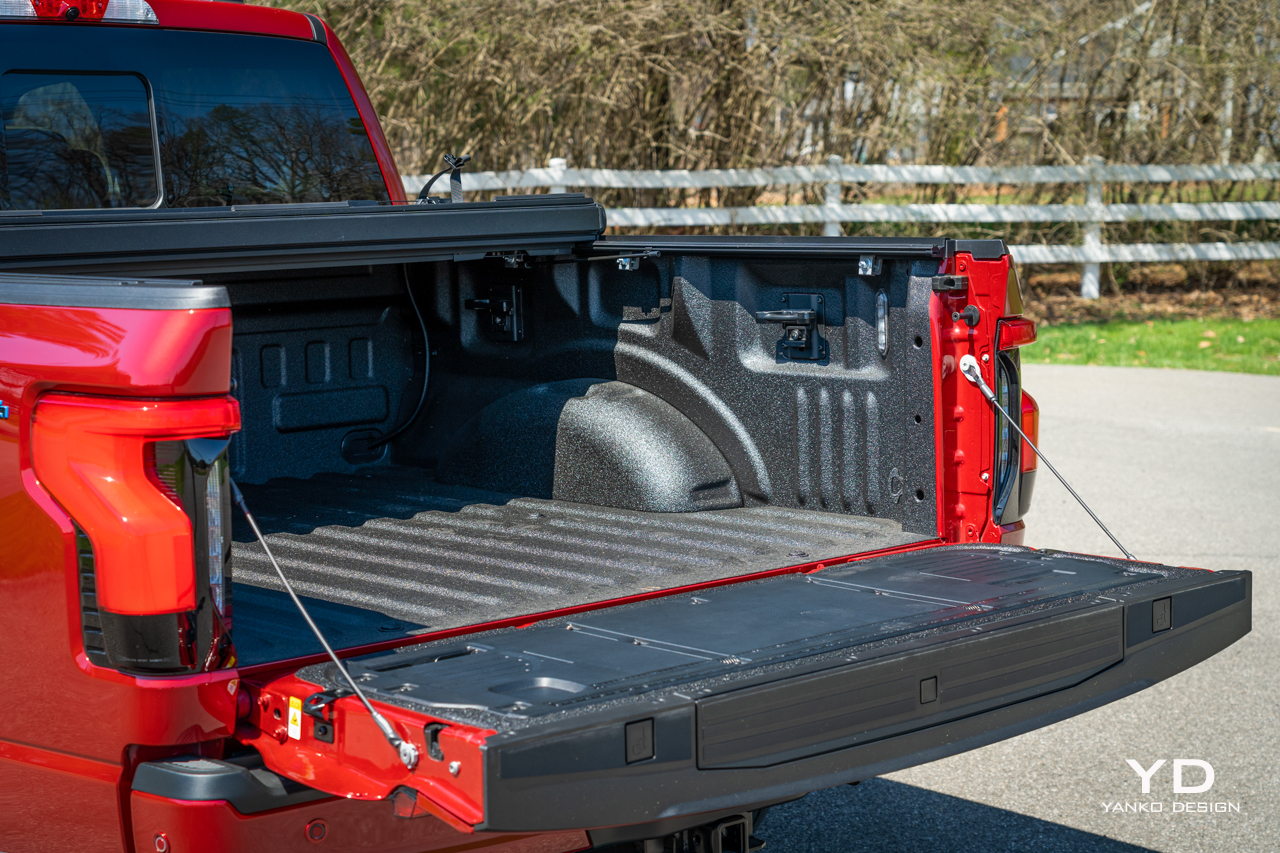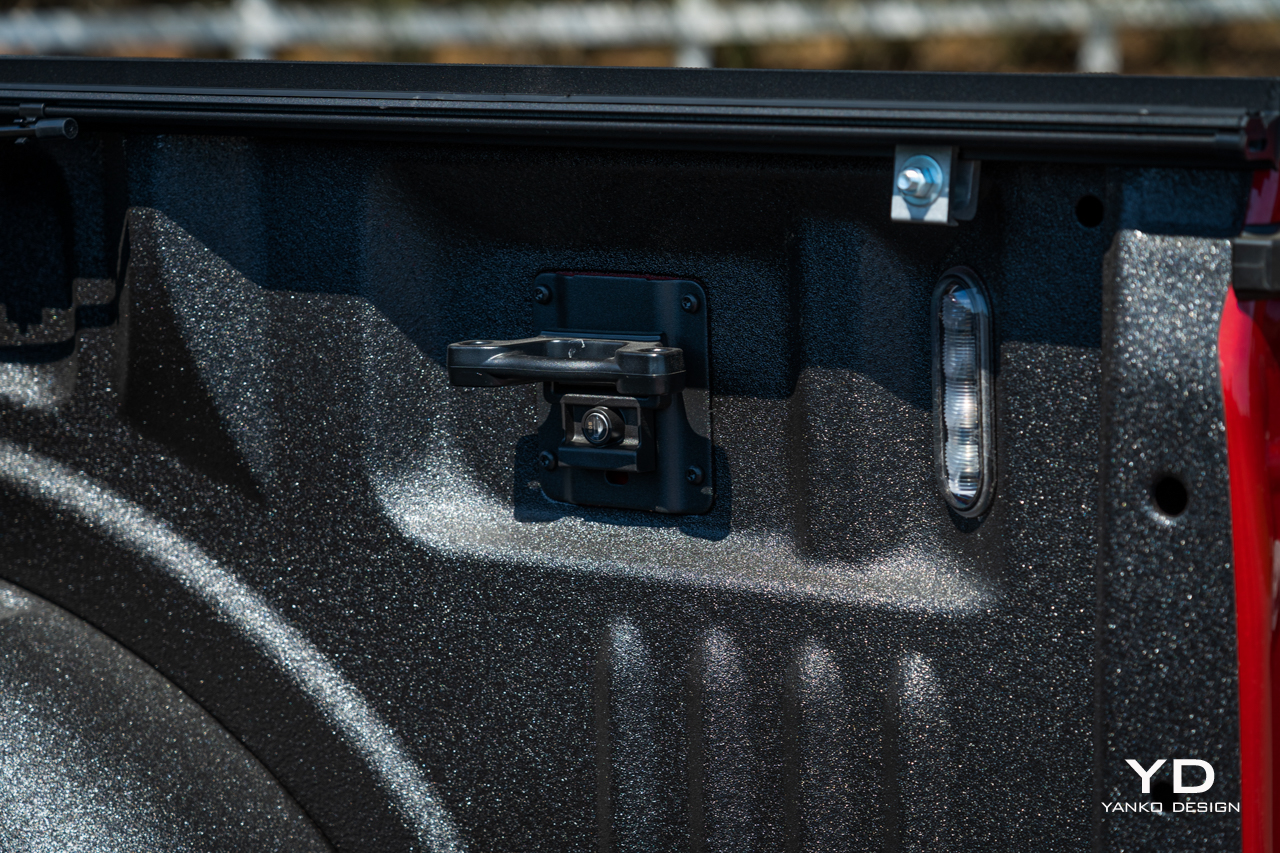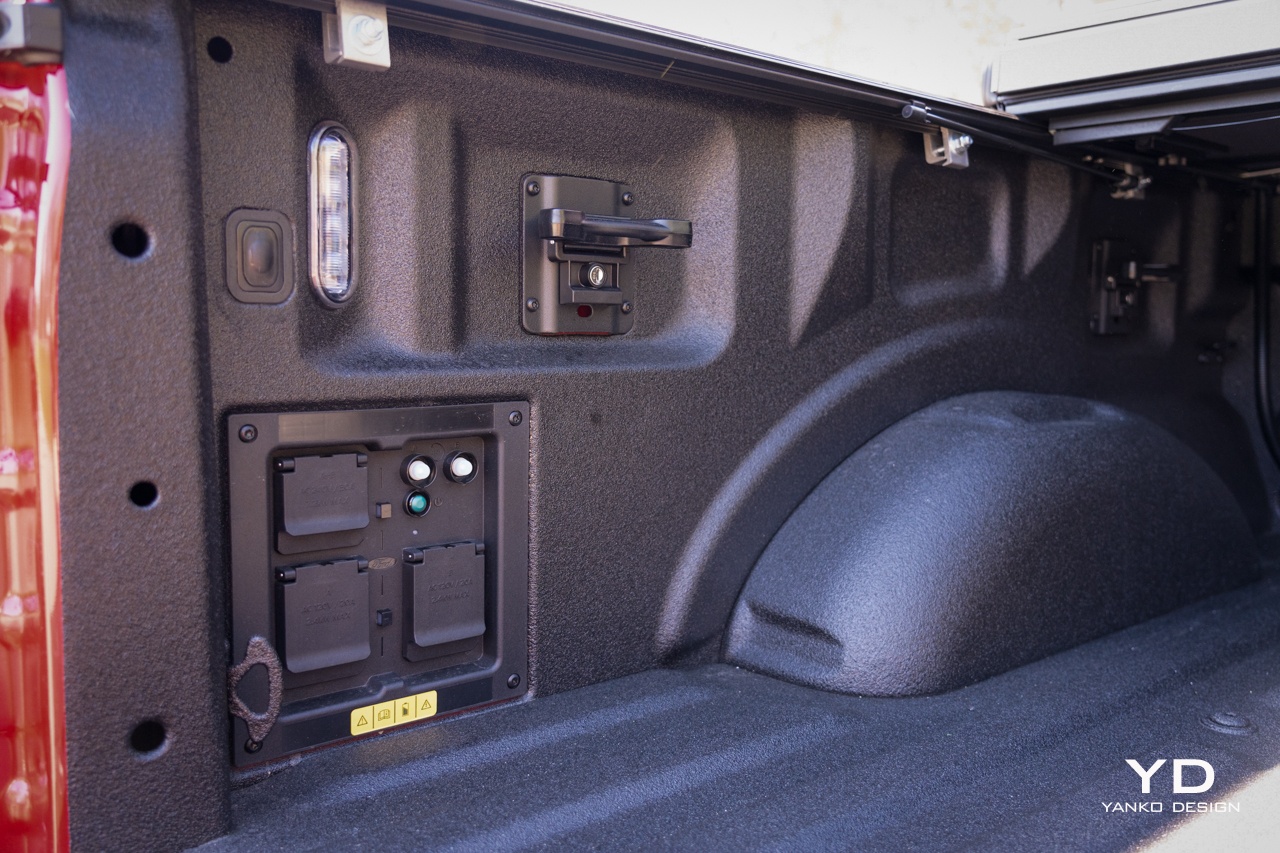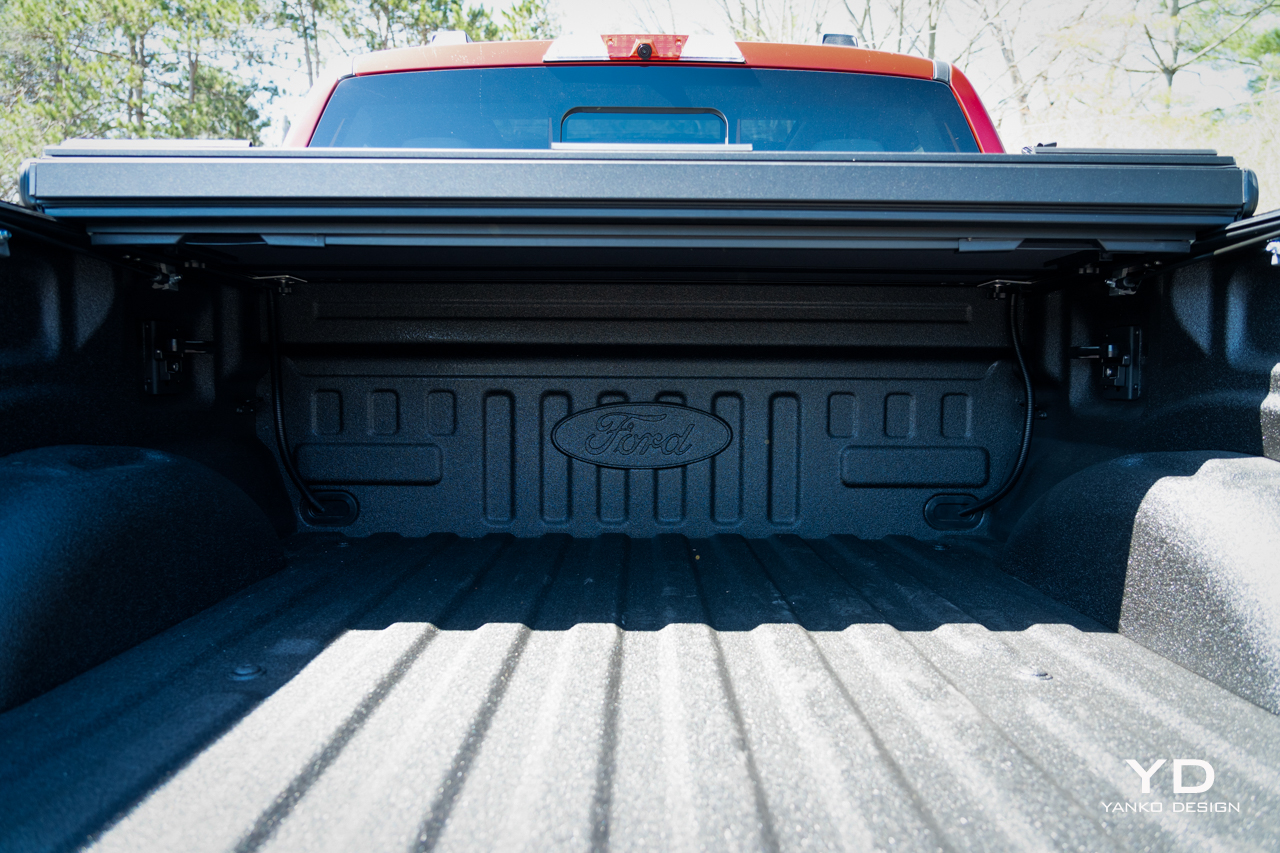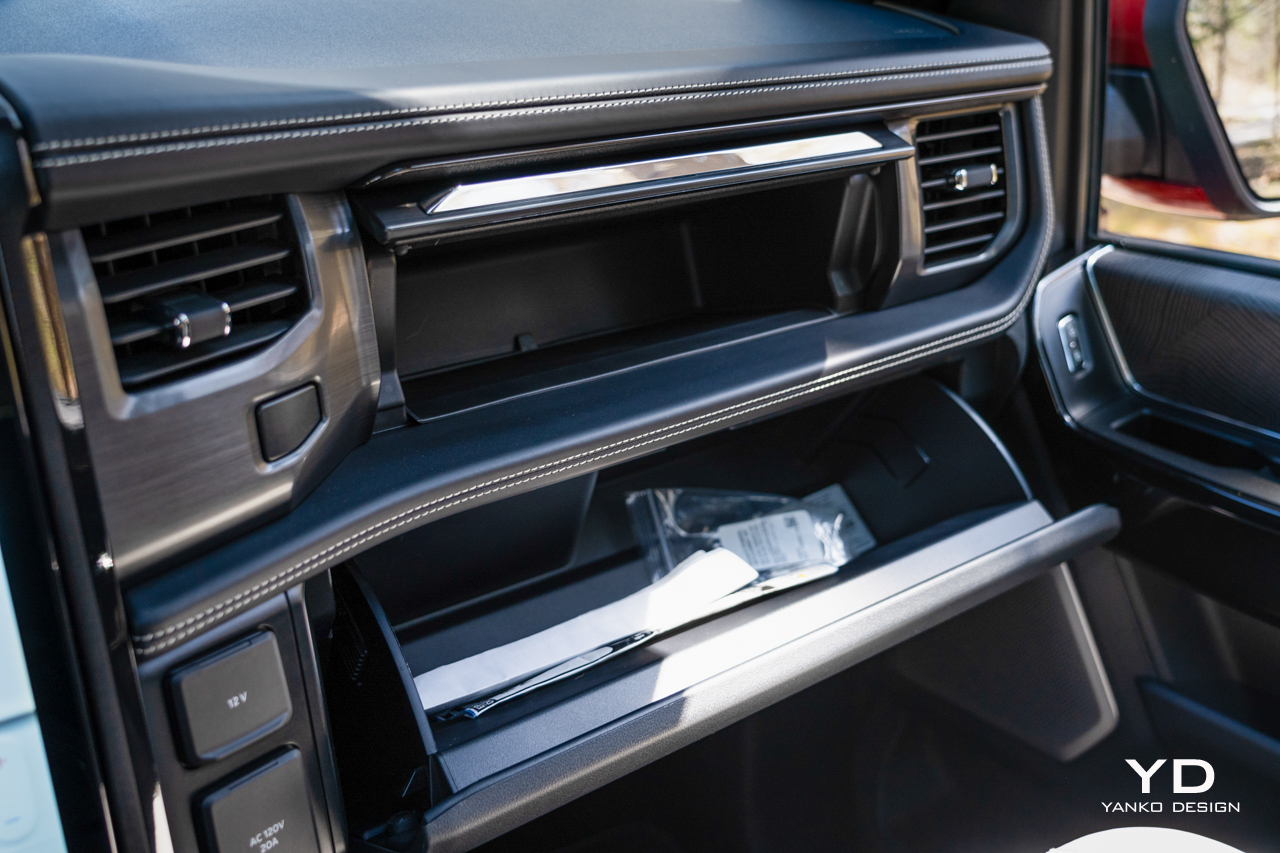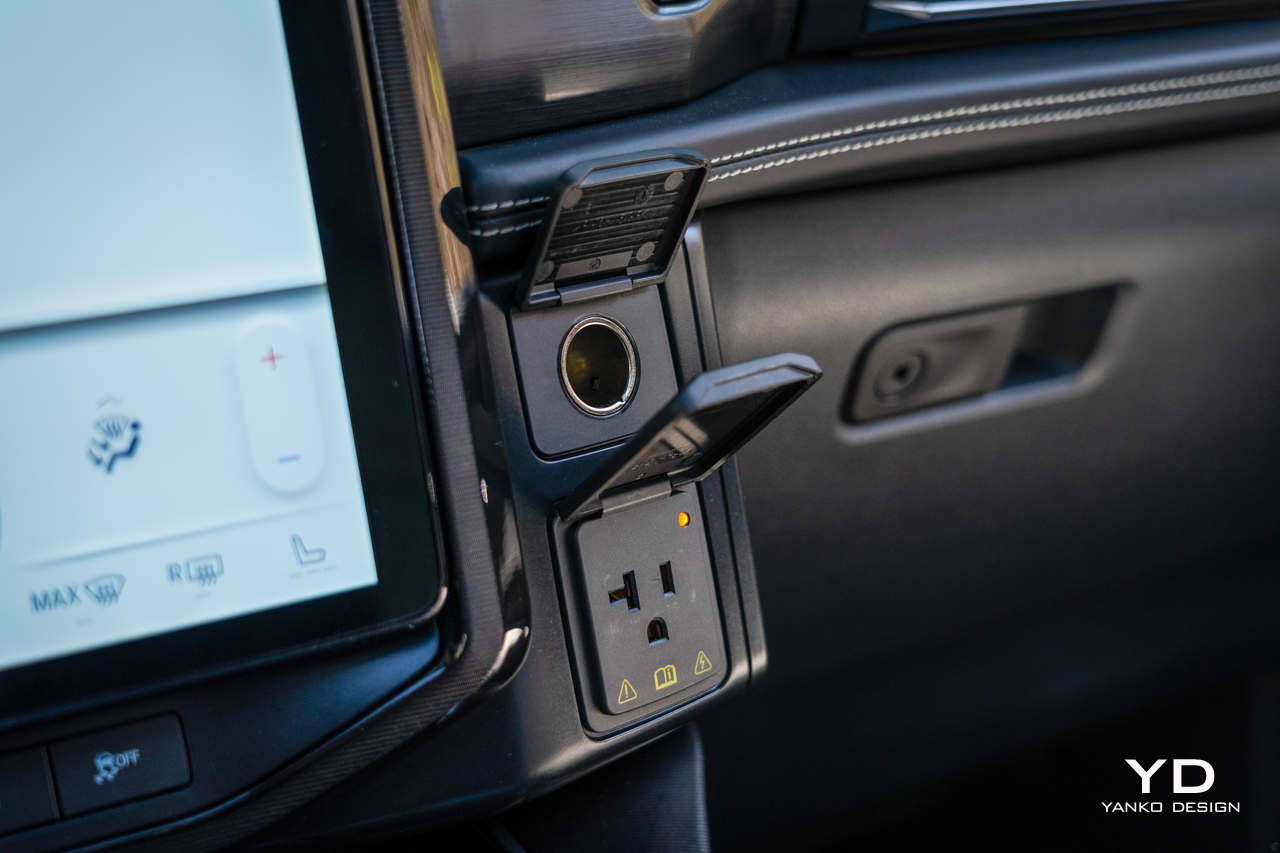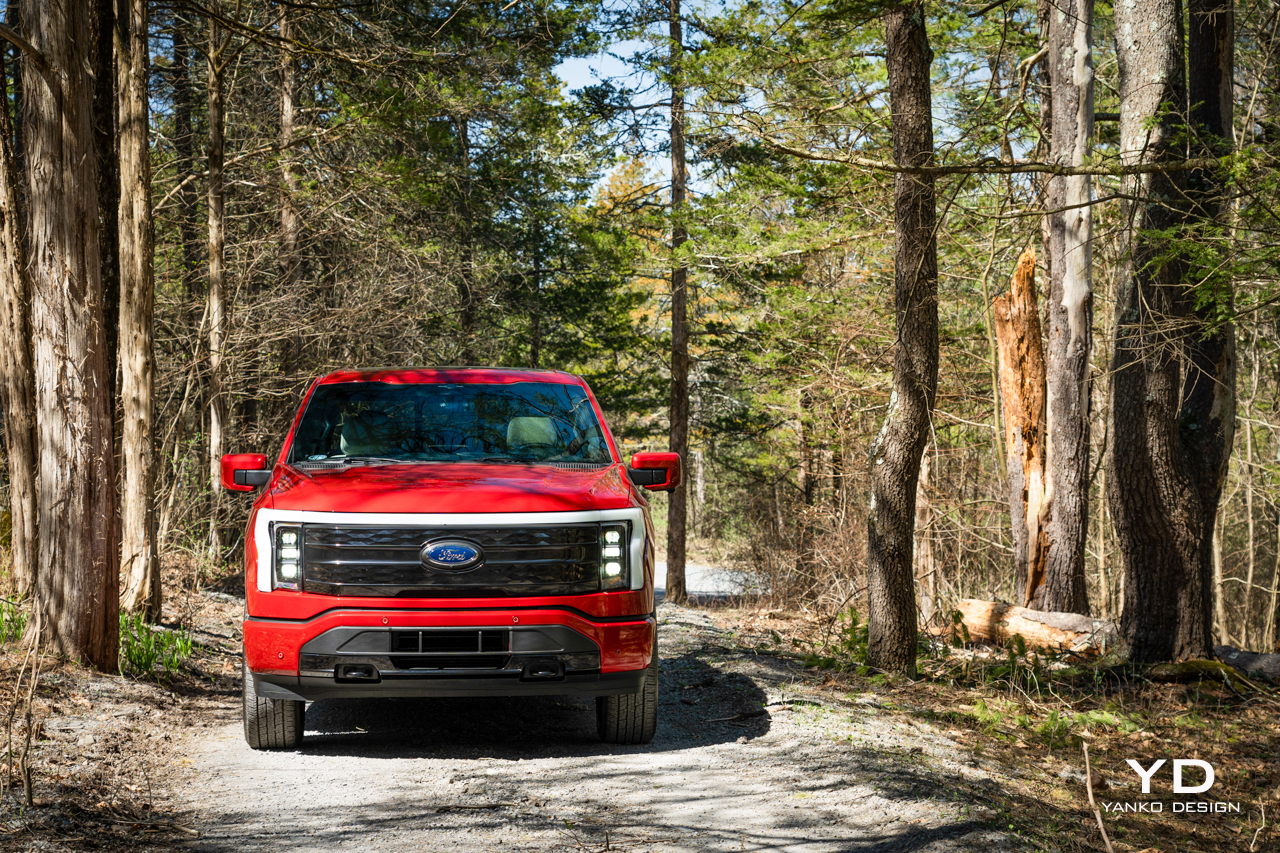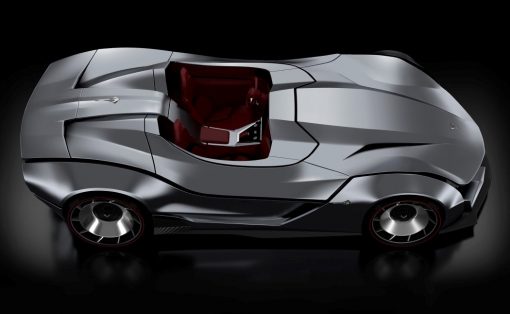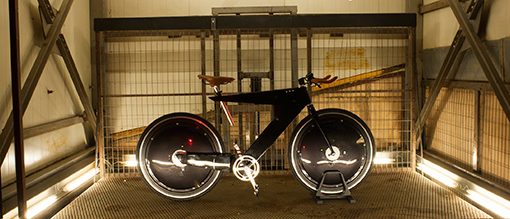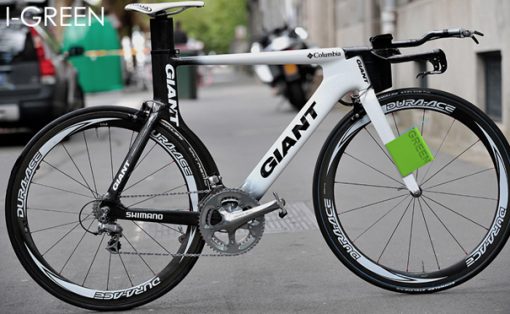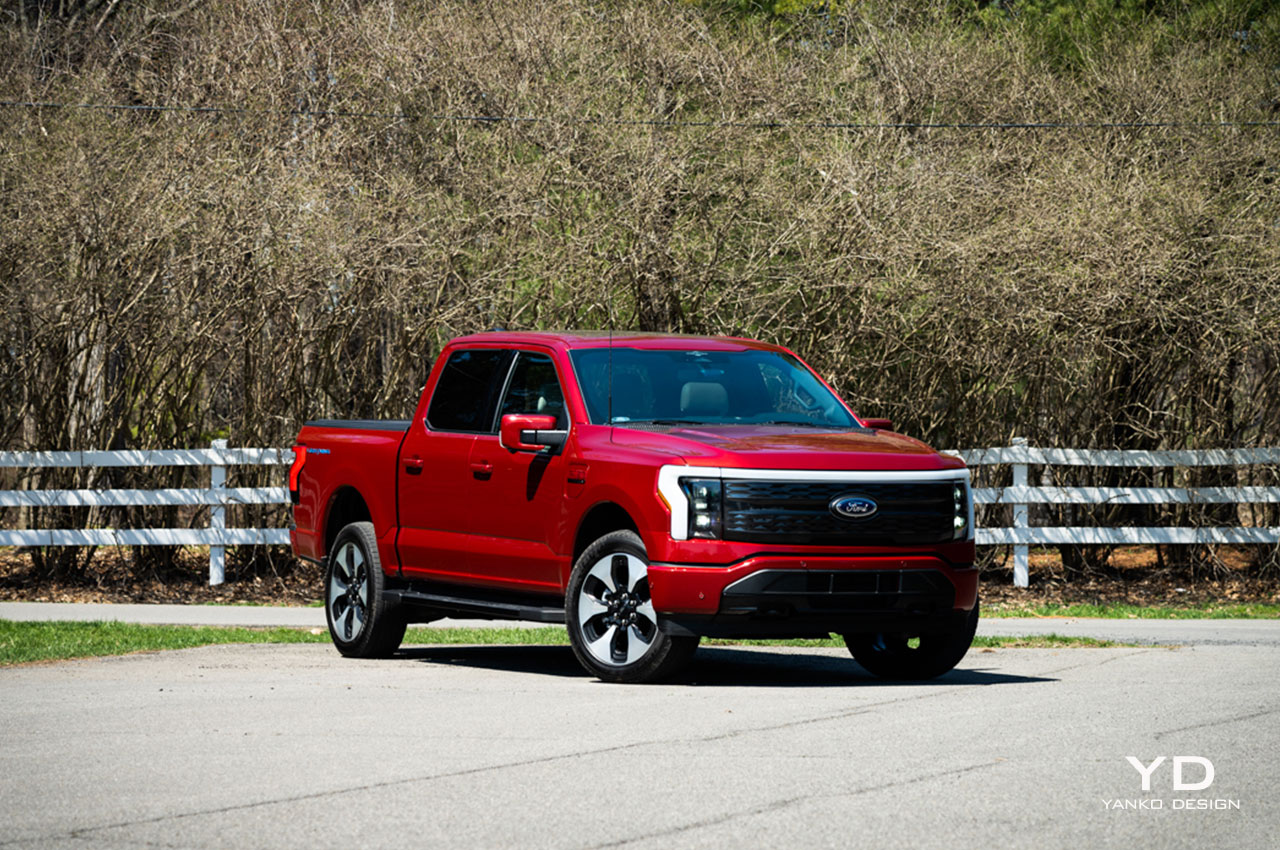
PROS:
- Long range
- Quick acceleration
- Big-truck practicality
CONS:
- Gigantic proportions
- Busy interior
- Cost
Ford sold over 650,000 F-150s in the U.S. in 2022, 653,957 to be exact. That’s a remarkable number of vehicles of any sort — Toyota only sold less than half that many Camrys. It’s that volume that made the release of the F-150 Lightning in early 2022 so significant. This truck truly has the potential to be a game-changer, taking millions of the most environmentally unfriendly vehicles off the road and replacing them with emissions-free successors.
That was the promise, and with a sub-$40,000 initial asking price the Lightning was a very tempting release. Now, though, the scales have changed dramatically. As of this writing, the cheapest Lightning, the Pro, starts at $59,974 — $63,474 if you want anything other than the stripped, fleet special. The truck you see here, meanwhile, cost just over $100,000. Given that, is the Lightning still the world-changing uber-truck that it was supposed to be?
It is, but the financial equation is sadly a lot more complicated than before.
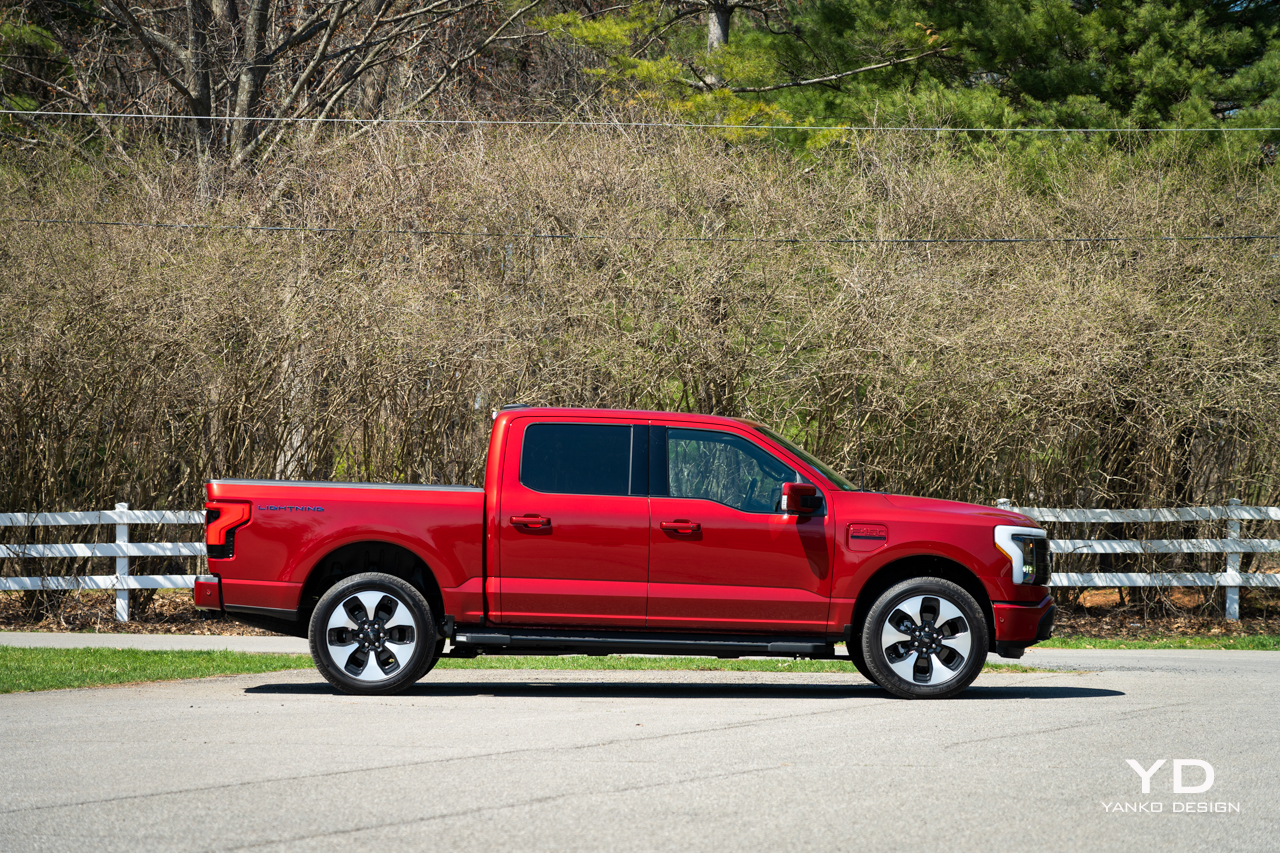
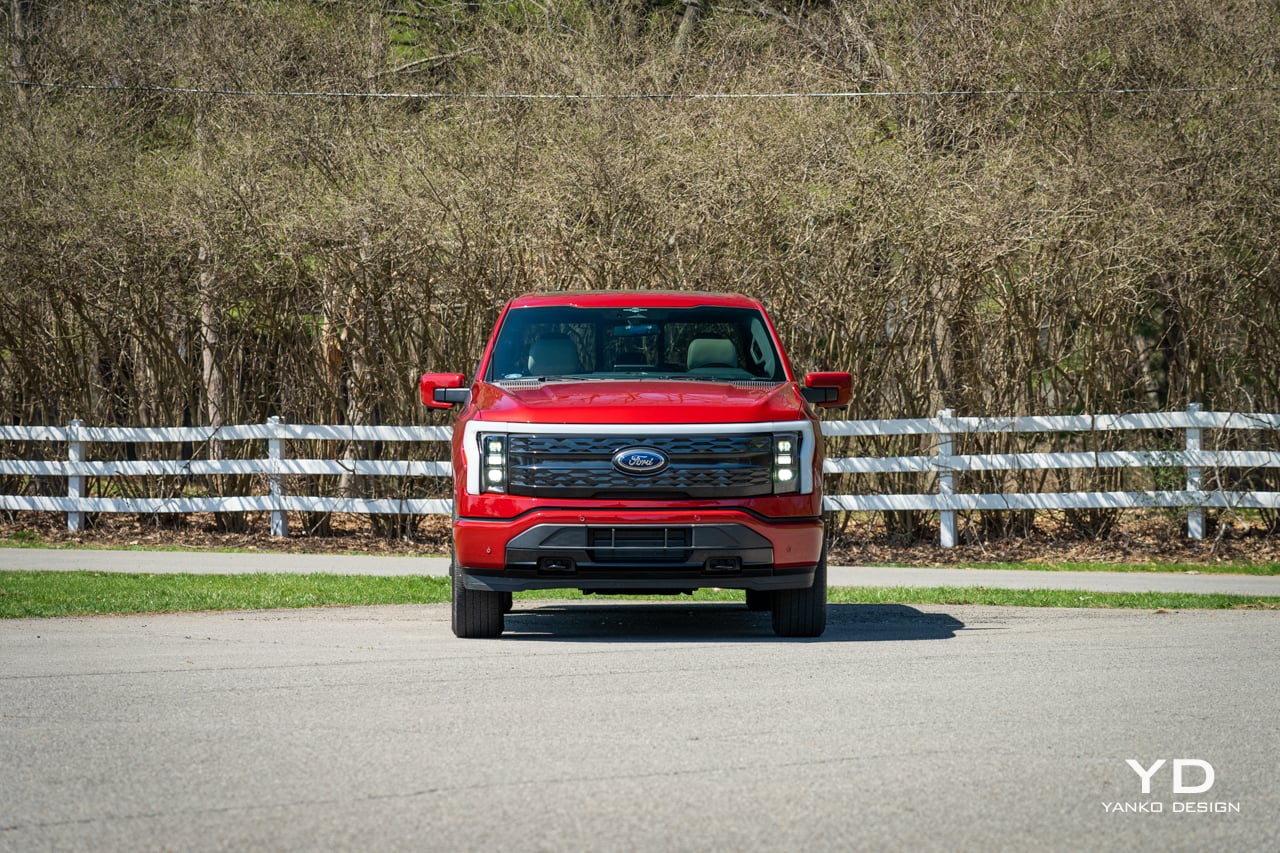
Exterior Design
The design of the F-150 Lightning doesn’t offer much in the way of nuance or progressive thinking. This thing looks, very much, just a truck. A big one at that. That’s not necessarily a bad thing, as buyers in this segment don’t tend to want anything radical, but you’d certainly be forgiven for not picking a Lightning out of a crowd of F-Series trucks in a parking lot.
In motion it’s a little easier to spot thanks to the distinctive running lights front and back, which span up around the headlights on the nose and between the tail lights at the rear. Those details are far and away the biggest visual differentiator between Lightning and a more pedestrian F-Series. But, look a little closer and you can spot some other cues.
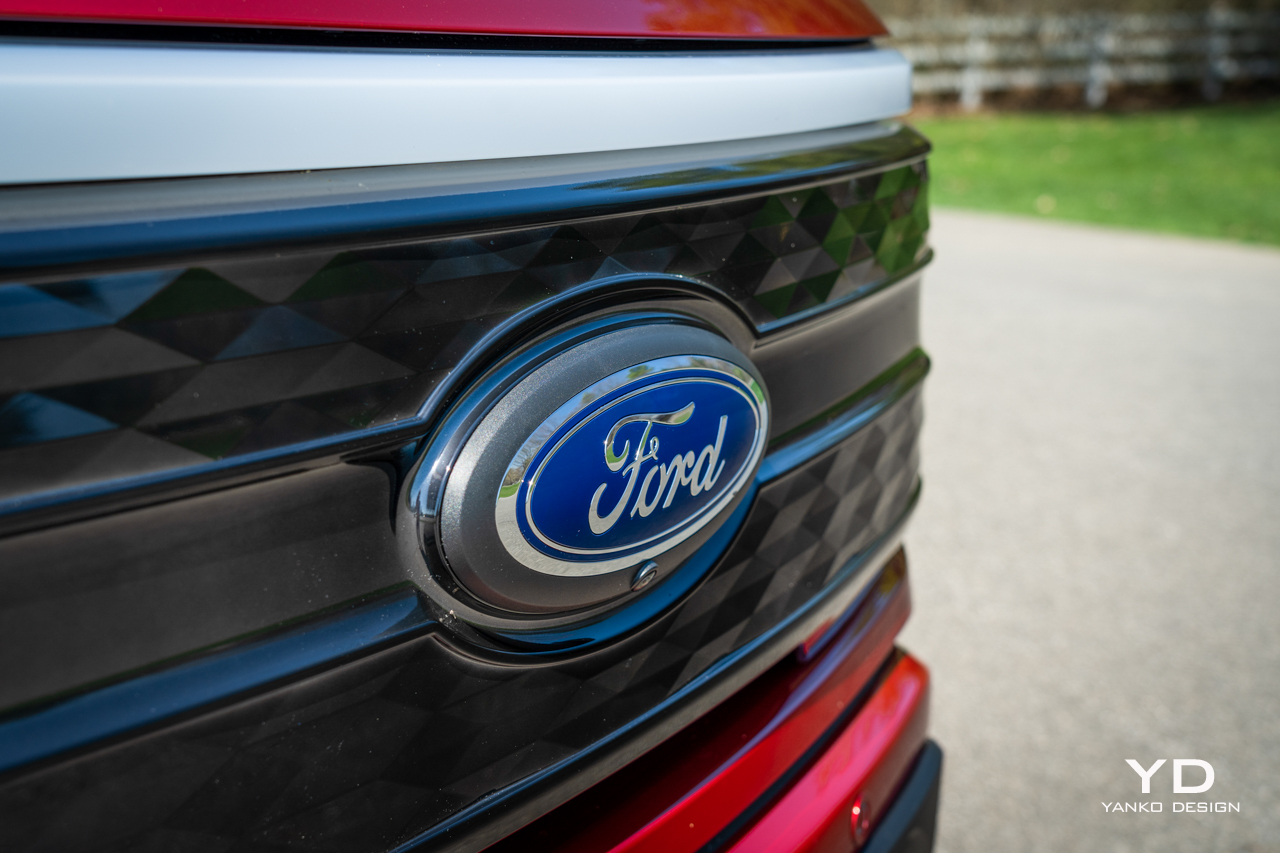
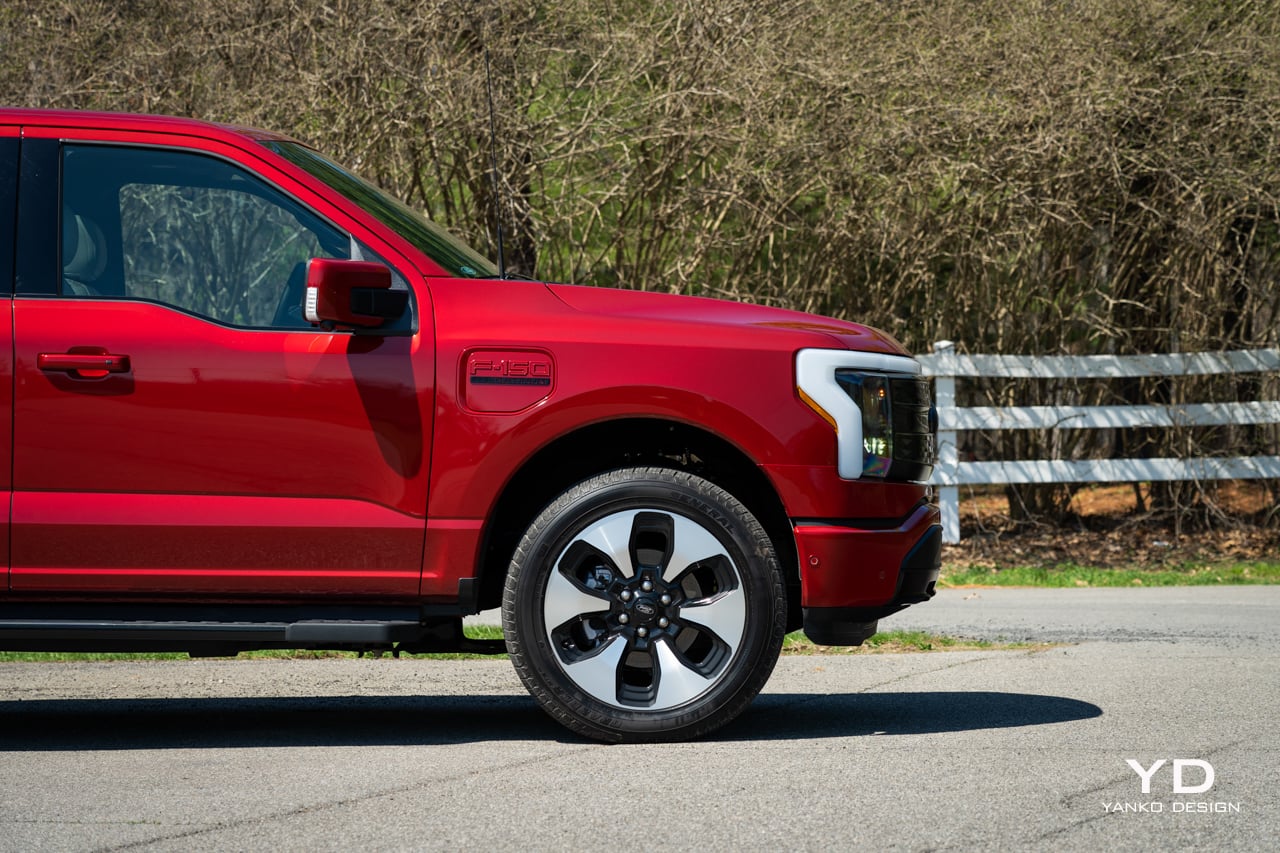
Where the grille should be is just a wide swath of black plastic. Instead of a fuel filler cap on the rear fender, there’s a charging port on the front fender, and a few Lightning badges are scattered here and there.
For every nuance that’s subtly different in the Lightning there are a dozen elements carried over wholesale from the regular F-150. The mirrors still stand out wide and proud, each with roughly the same aerodynamic finesse as a shoe box. Body and bed are still split by the same, vertical, inch-wide gap and there’s even the same number pad on the B-pillar for keyless entry of the old-school variety.
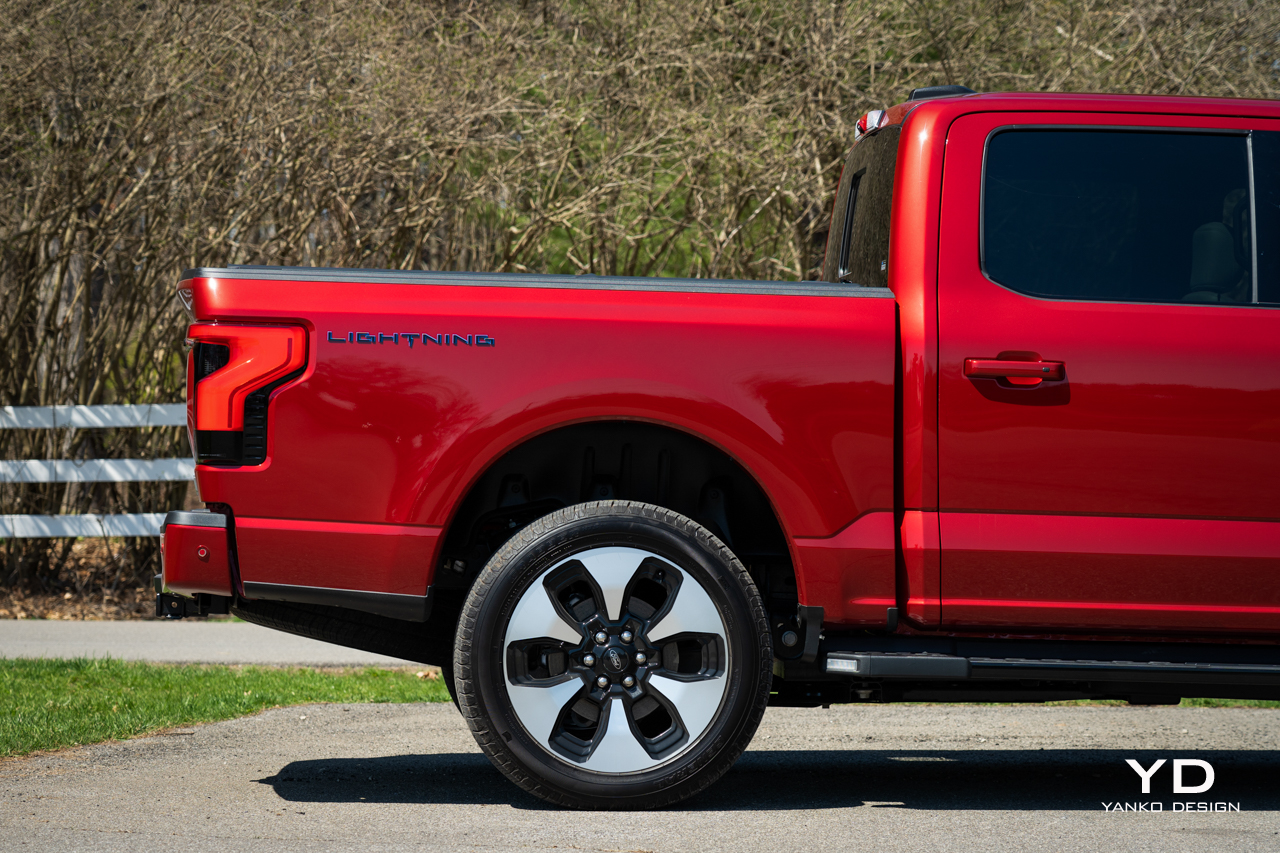
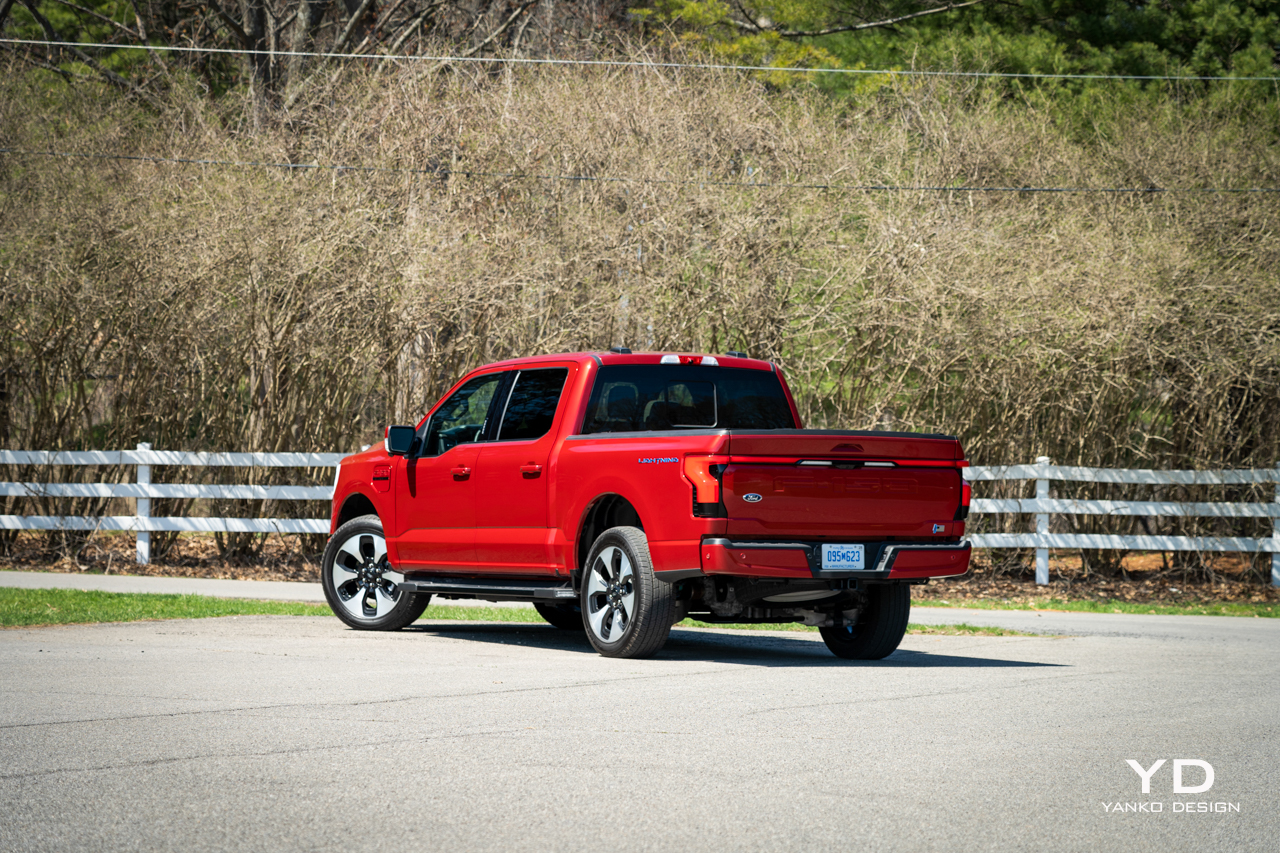
Most significantly: the F-150 Lightning is huge, just like a regular F-150. Trucks in this category have been putting on weight for generations now and this current implementation is positively obese. At 231.7 inches, the Lightning is a whopping 33 inches longer than a Tesla Model X SUV, 45 inches longer than the Mustang Mach-E. It’s 96 inches wide and 78.3-inches tall — too tall even to fit into my garage, as it turns out.
It’s hard to argue with the outright capabilities, and it makes sense for Ford to come out of the gate with a top-shelf electric truck instead of something a little smaller and more manageable (more expensive cars have higher profit margins, after all), but I can’t help wishing this were a little more Maverick and a lot less massive.
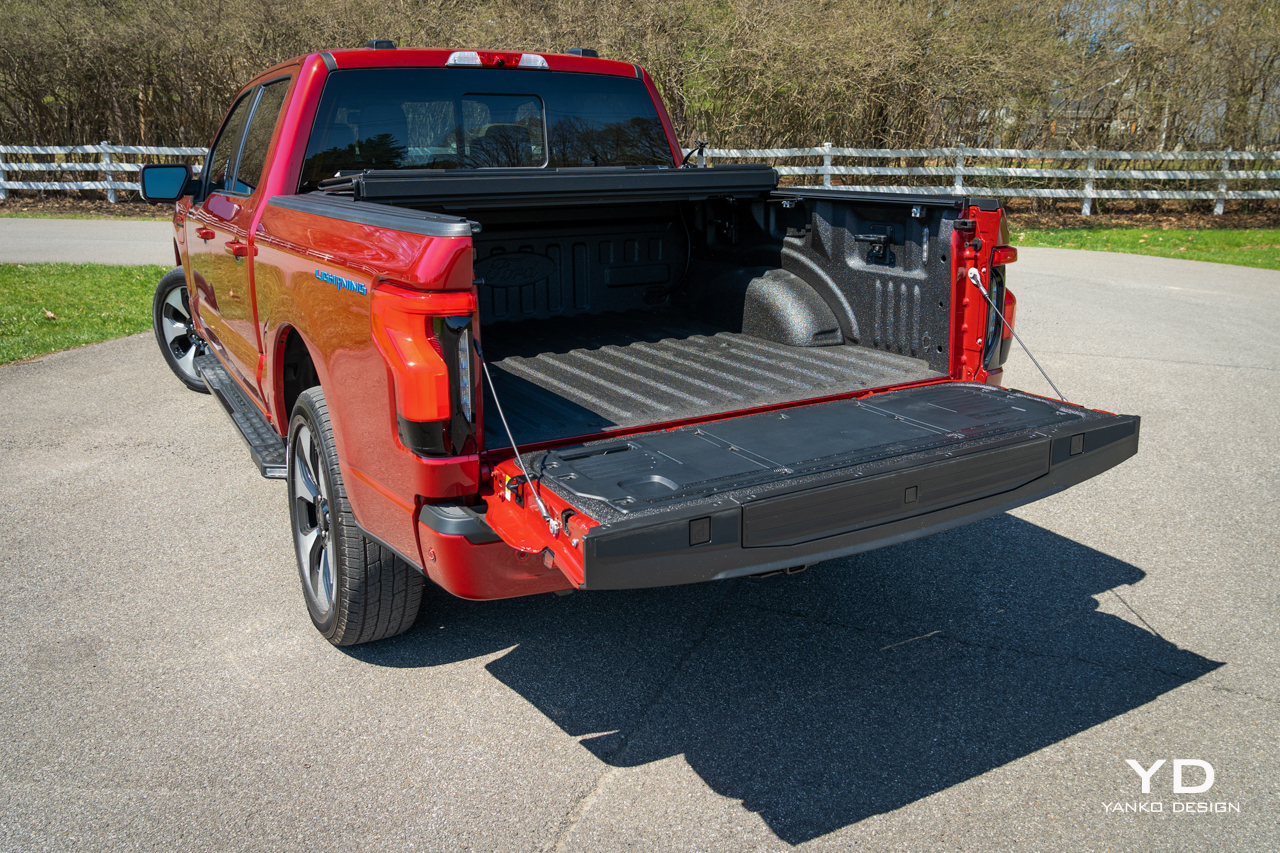
Interior Design
That size does create a truck with an expansive interior. Five adults, even those of a generous girth, will fit comfortably here with adequate headroom and shoulder room and every other kind of room, too. Rear-seating isn’t exactly luxurious, but it is perfectly acceptable, with heating, a pair of USB ports (one A and one C) plus a 12-volt outlet and even a straight-up, three-prong 120V outlet.
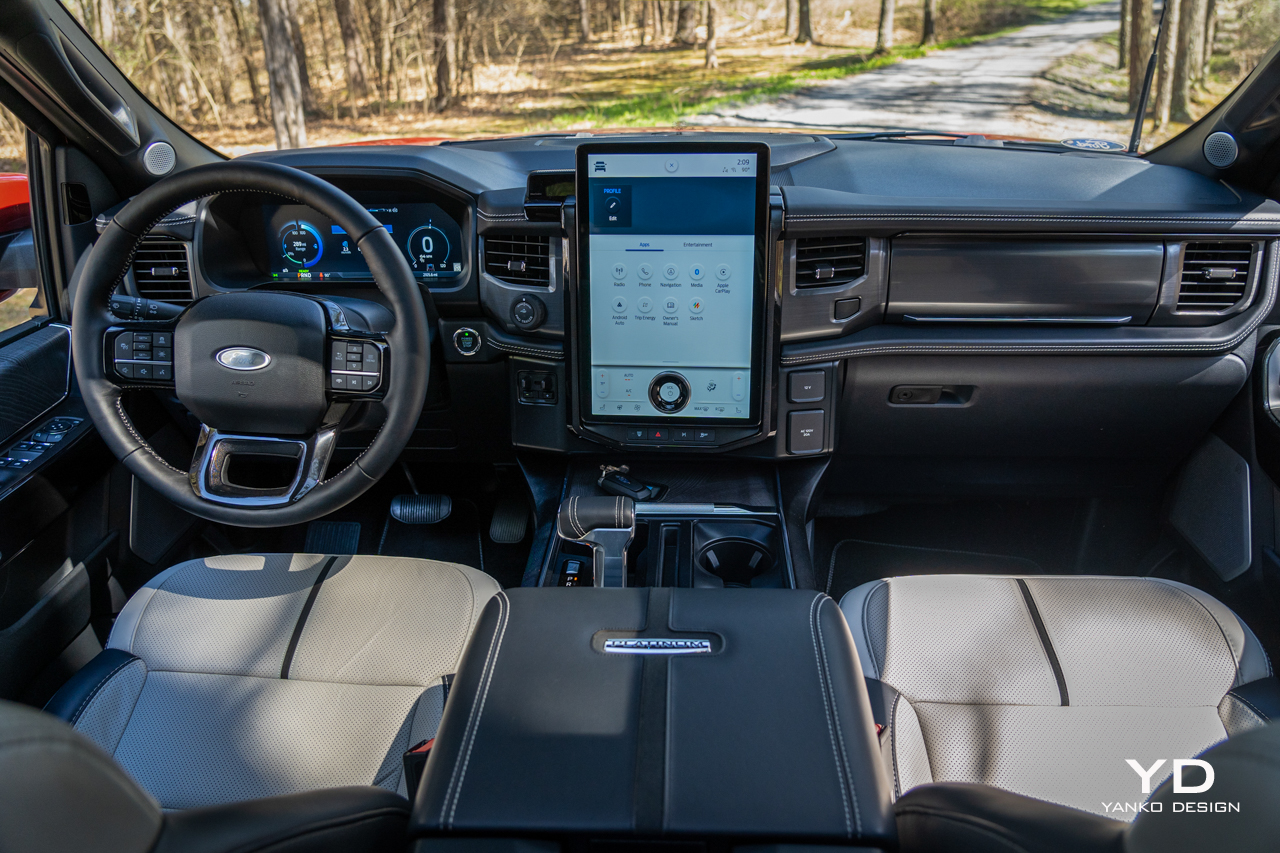
In the Platinum trim, the two seats up front add on ventilation plus the usual power adjustments including lumbar. The giant arm-rest flips up to reveal a chasm big enough to store a couple six packs of your favorite beverage. Or, you can fold out the cushioning on top to create a perfectly serviceable workspace. Another pair of storage cubbies cut in on the sides of what would be the transmission tunnel if this thing had a transmission, plus another compartment ahead of the shifter with wireless charging and a pair of USB ports.
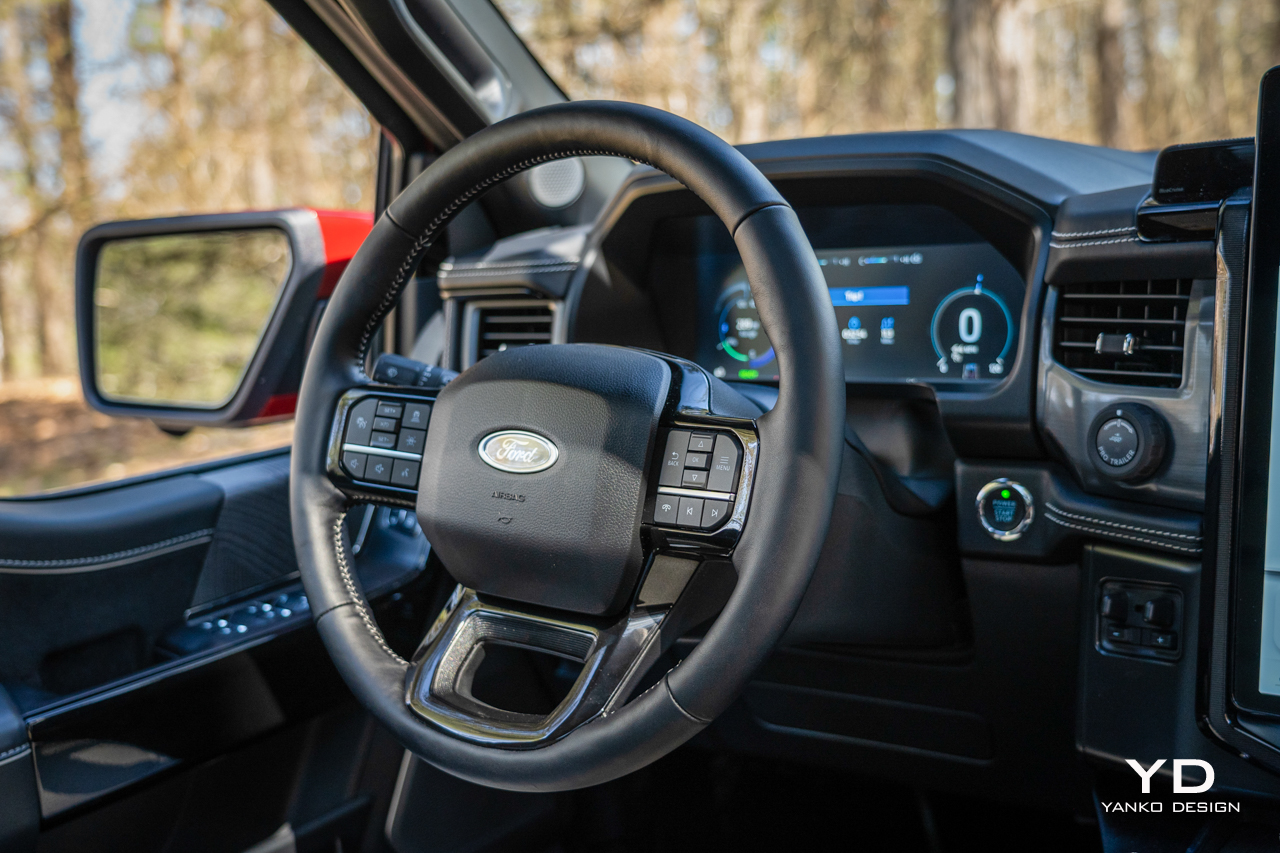
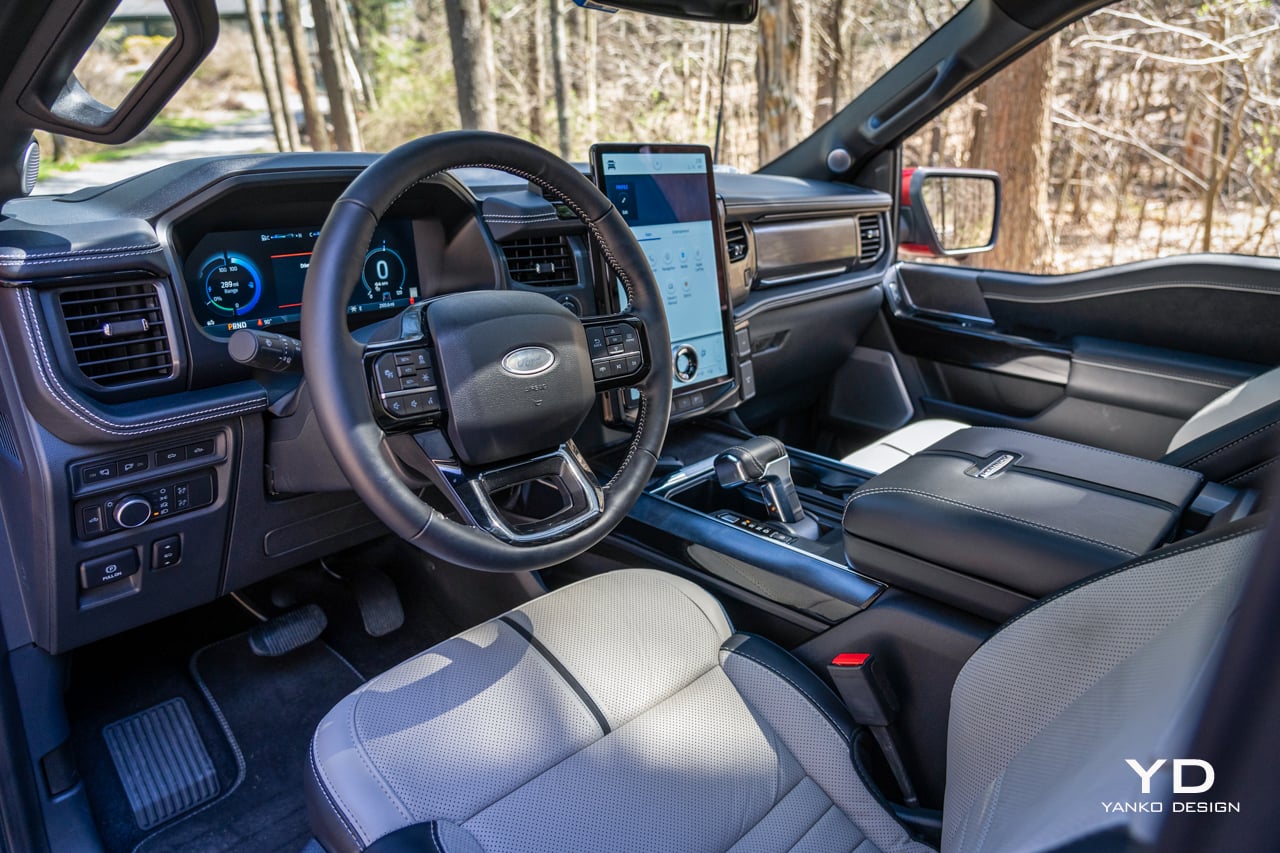
The doors are similarly riddled with storage space and there’s not one but two glove boxes. Plenty of places to lose plenty of things, but also a generous place for working. The USB-C ports in the center will keep your laptop charged while you work if you forgot your adapter, and the truck’s integrated WiFi will ensure your kids in the back can keep on streaming on the way to school.
In terms of visual appeal, there’s a lot going on in the interior, contrasting and clashing patterns and subtly different dark shades. White wouldn’t be my first upholstery color for a work truck, but it does provide a bit of nice contrast when entering the Lightning.
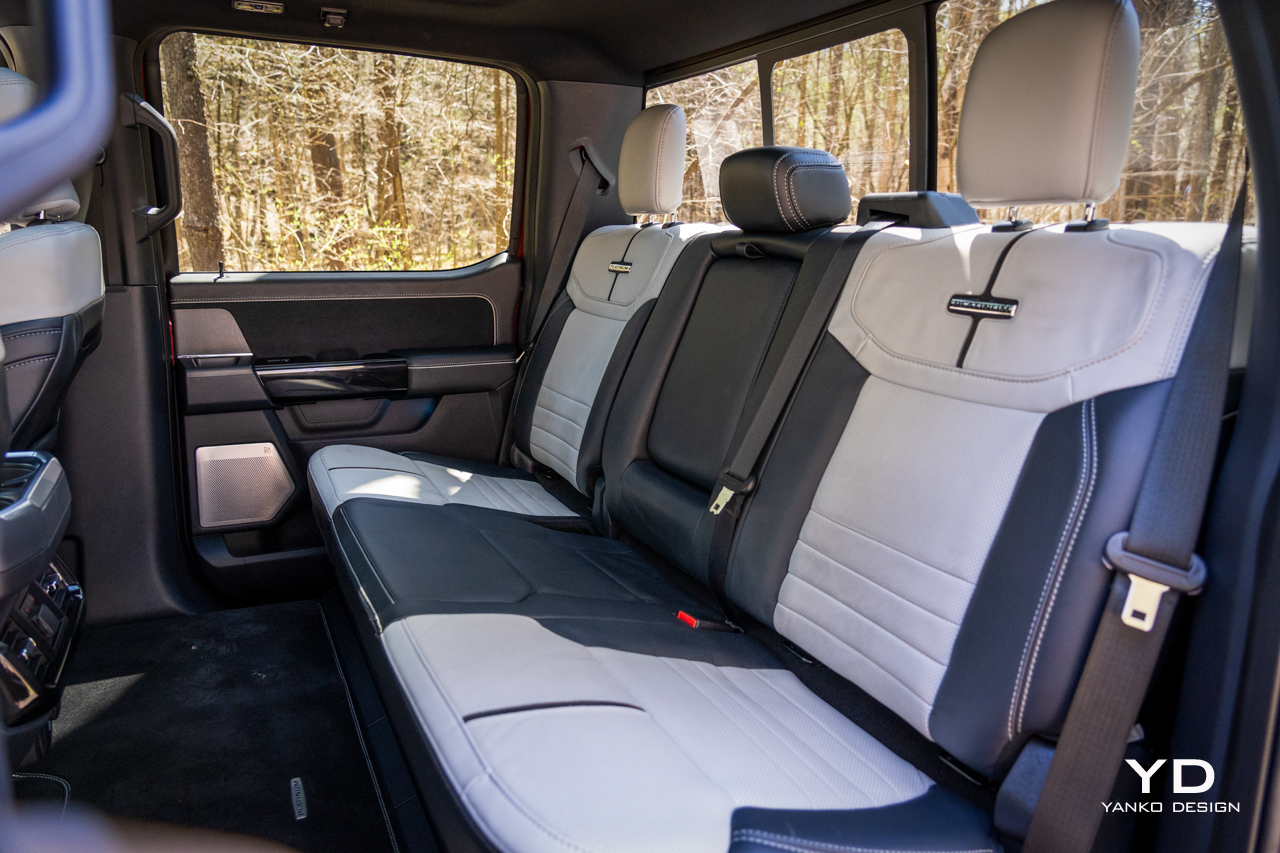
Once seated, you’re confronted with a sea of black plastics, some gloss, some textured, some knurled, some embossed with a fake leather pattern, some with a faux brushed metal appearance, and some wrapped with pseudo woodgrain. This mix of materials is a bit jarring and a bit disappointing in any vehicle costing this much.
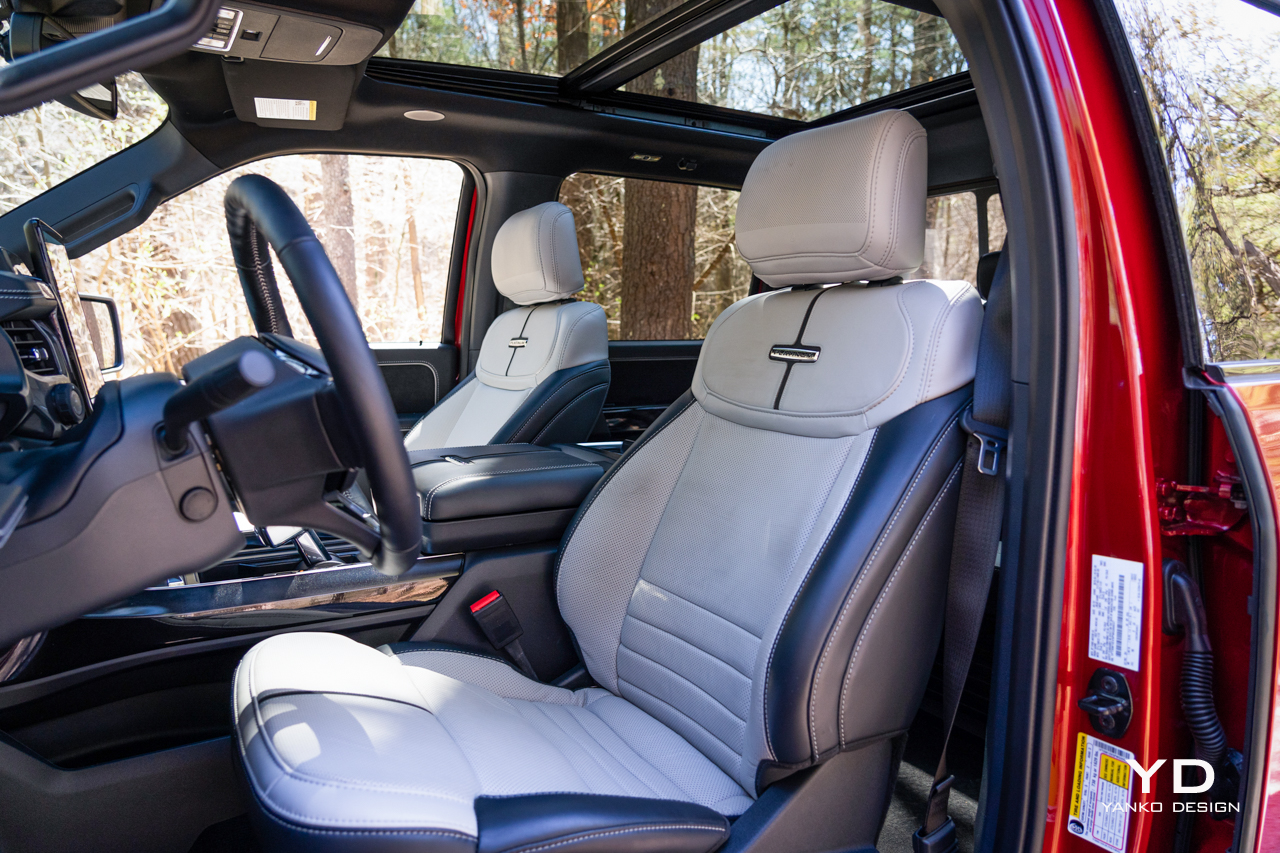
Technology
The best part of the interior is the massive, 15.5-inch, vertically oriented display sitting right in the middle of the dash. This gives plenty of real estate for everything from climate controls on the bottom to quick access to settings along the top, with numerous tiles slotting in through the middle depending on what you’re doing.
That said, I do wish it had a few of the more subtle tricks from the Mach-E’s implementation of SYNC, like a persistent button on the top for quickly getting back to Android Auto or Apple CarPlay, both of which work wirelessly here and both also serve turn instructions to the gauge cluster.
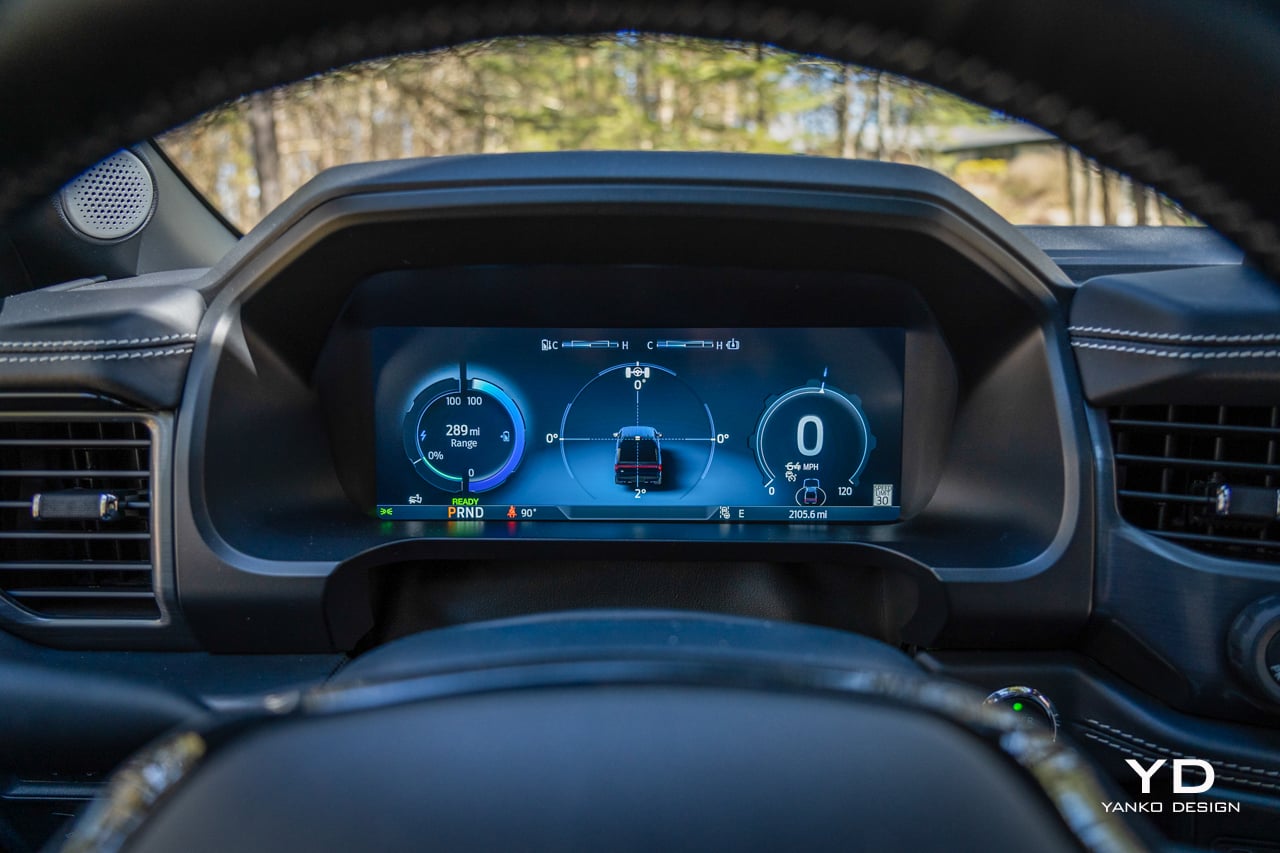
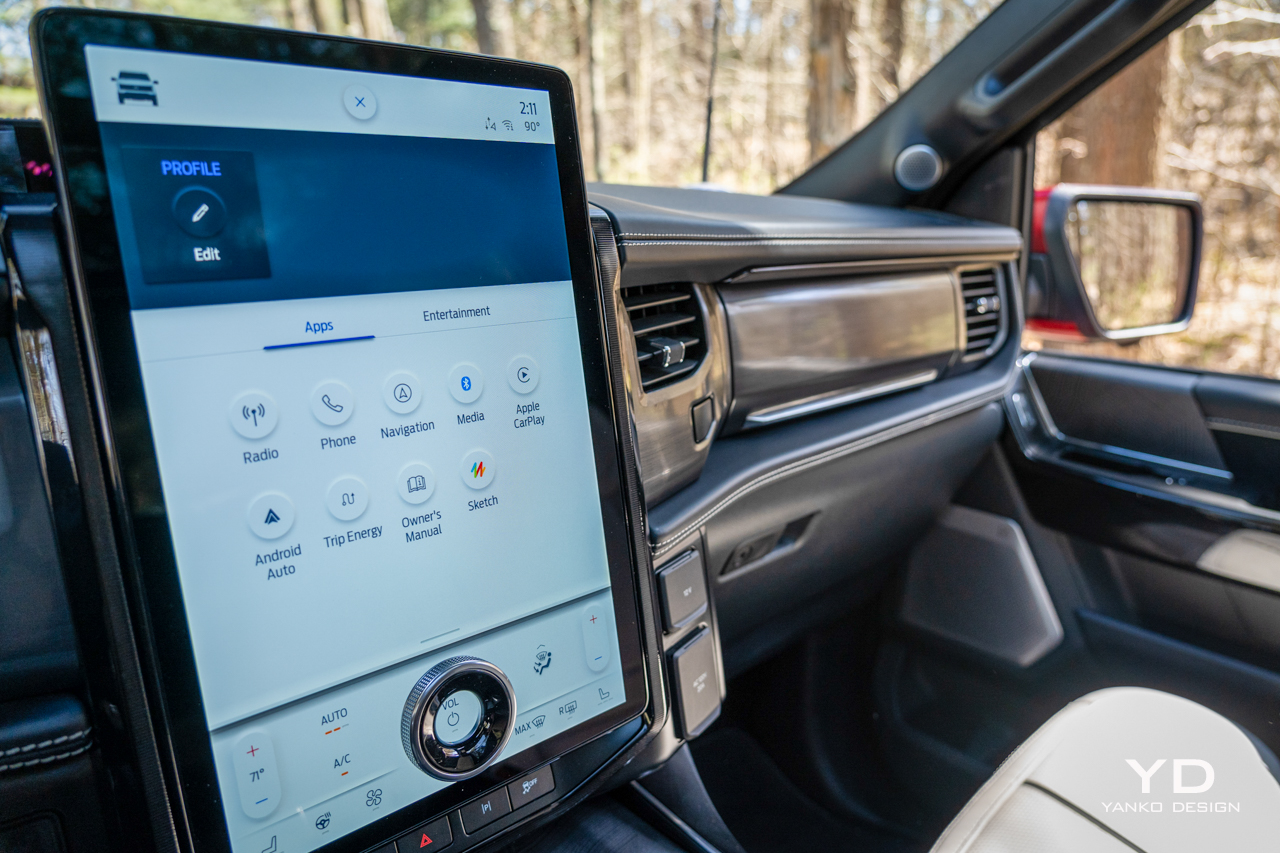
That cluster is 12 inches, massive compared to that on the Mach-E and is configurable, displaying everything from charge status to pitch and roll for off-roading. The 360 cameras are also useful when you’re hitting the trail, but they’re far more helpful when trying to slot this thing into a parking spot. That can be a bit of a challenge, but with self-parking the Lightning is happy to handle that for you – if you’re not in a hurry.
Other active features include adaptive cruise, lane-keep assist, and automatic emergency braking with evasion. The hallmark here, though, is BlueCruise. This is Ford’s hands-off driver assistance system, capable of handling steering and speed on highways. It’s only available on certain, mapped and divided roads. When you get to one, there’s nothing to do but let go of the wheel.
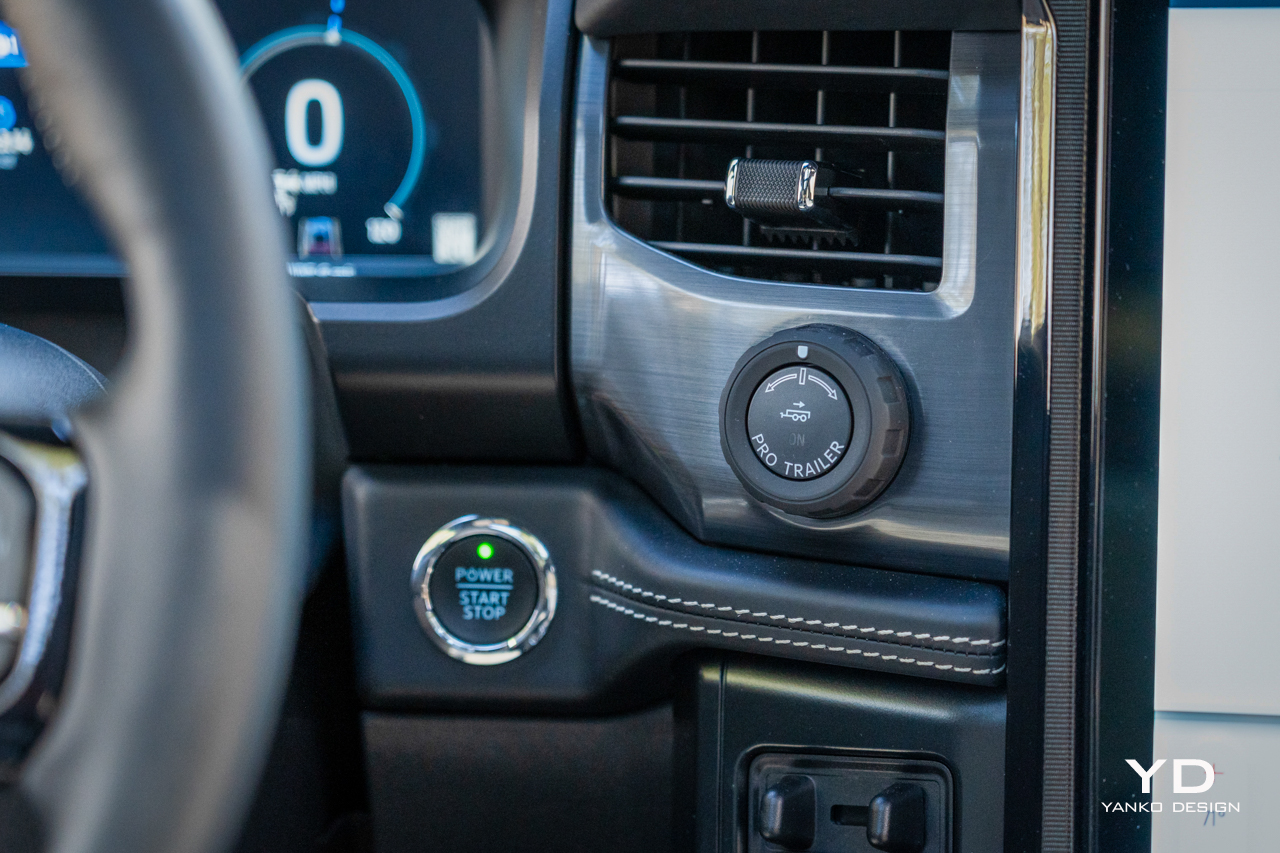
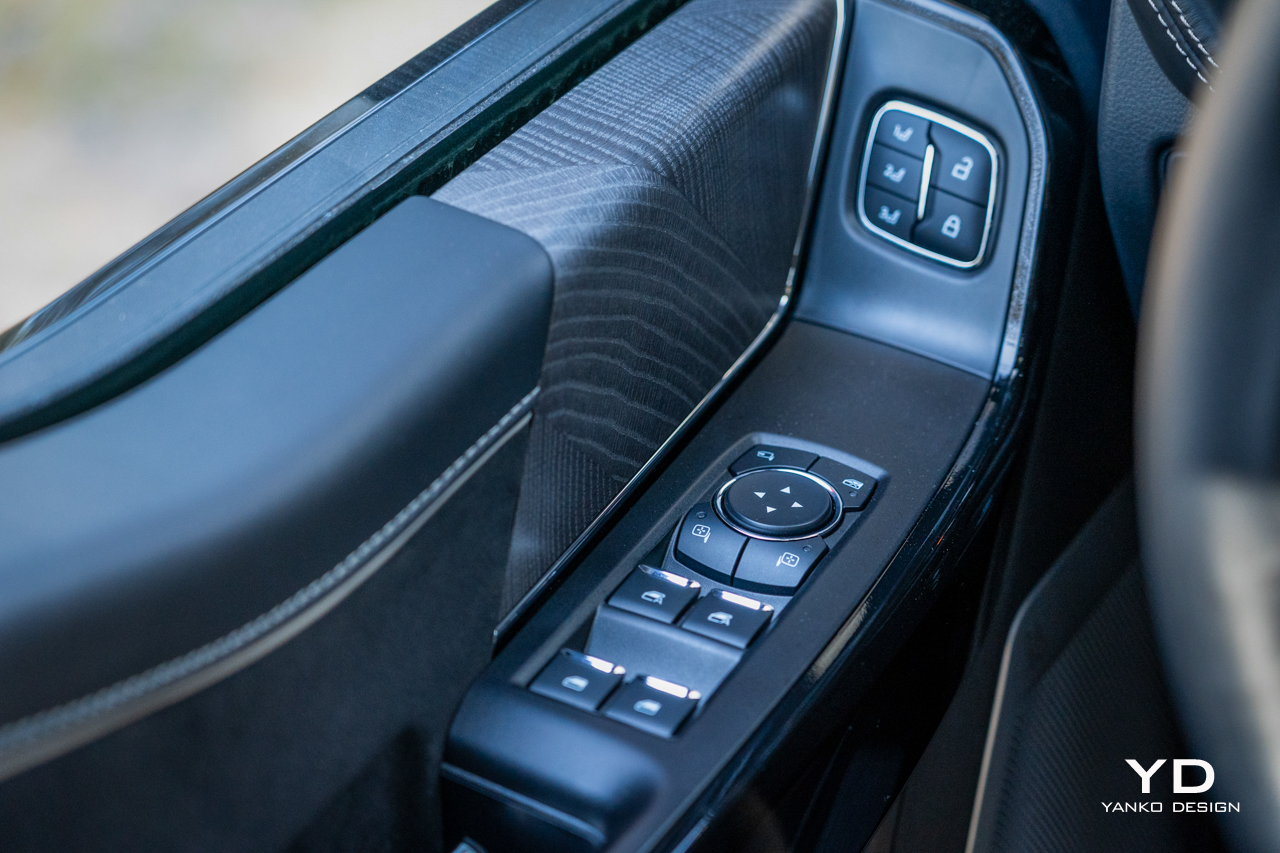
BlueCruise will do two things: pilot the Lightning and watch you. An infra-red camera built into the dashboard is always studying your eyes to ensure that you’re paying attention, because even if your hands are off the wheel you’re still responsible for taking over. Let those eyes wander too long on a curious roadside sign or a particularly cute dog frollicking in someone’s front yard and the truck will chime at you. Do it again and it’ll chime again, more insistently. Eventually, the system will disable itself and you’ll be on your own.
BlueCruise works well, but the one in the F-150 Lightning isn’t the most advanced flavor of this technology, unable to perform automated lane changes. You’ll still need to handle that yourself.
But the truck can handle itself in a number of other ways, like the recently released Dynamic Hitch Assist system. Just back the car up somewhere near the hitch on your trailer and the Lightning will use the rear-view camera to automatically identify where the ball on your hitch needs to be, then line back itself up perfectly.
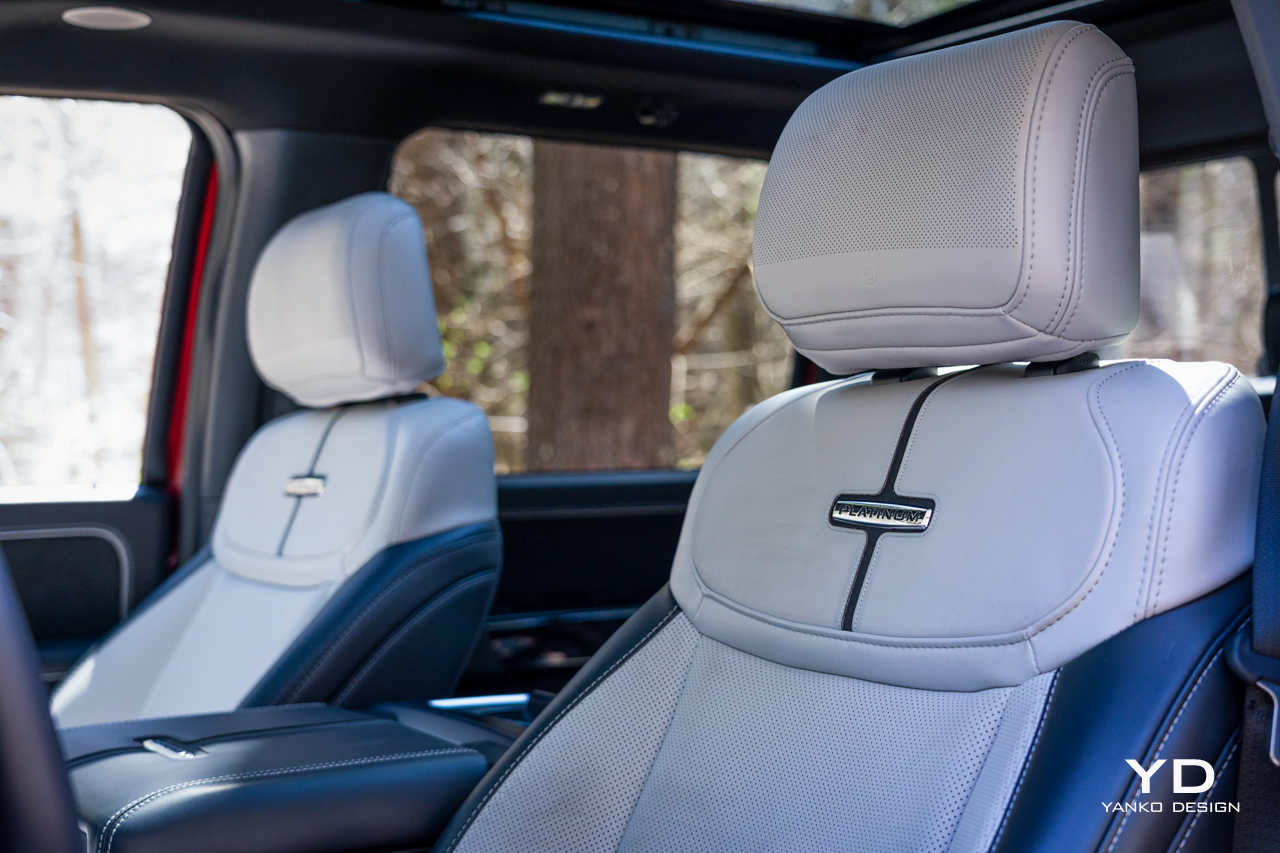
Ride and Dynamics
The F-150 Lightning has a traditional look and that very definitely continues to the traditional feel. This thing drives like a truck through and through, but a very comfortable and compliant one. The Lightning is still built on the same ladder-frame design as the normal F-150, but with independent suspension here instead of the traditional live-axle.
That surely helps to increase the ride quality and comfort. The Lightning is compliant on broken roads and surfaces, soaking up railroad crossings and separation joints without complaint. That said, body control is a bit lacking, the big rig having a tendency to float and bob a few moments longer than you might like after a major compression.

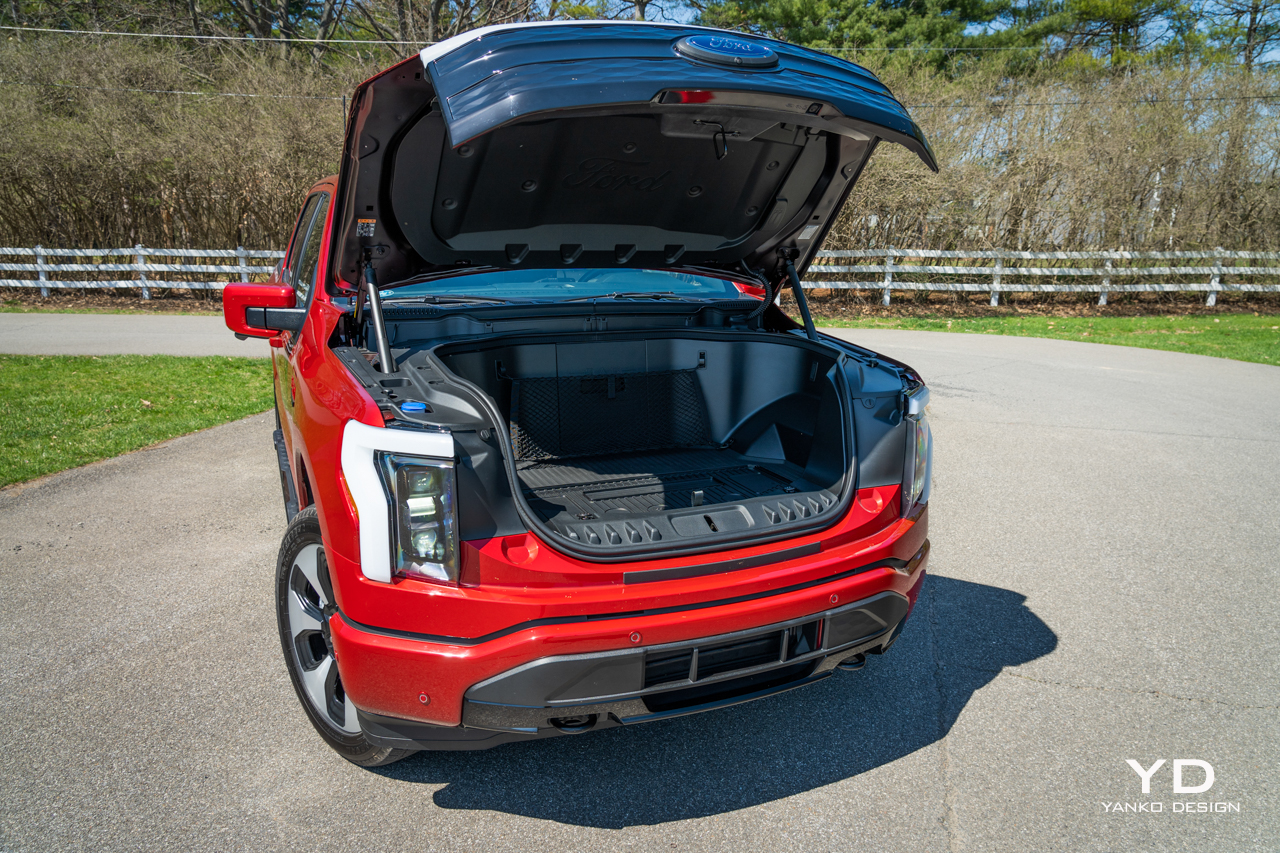
Steering is relaxed but acceleration is not. This dual-motor Lightning with the Extended Battery gets to 60 mph in less than 4.0 seconds, which is quicker than many sports cars. It scrabbles off the line with only a bit of a whir and a massive amount of thrust. More importantly, it can tow up to 10,000 pounds in XLS or Lariat trim, which isn’t too far from the maximum 14,000 on a regular F-150. That said, payload is down from 3,325 to 1,952 if you get the larger battery, 2,235 without.
To test that, I loaded the truck up with a couple cubic yards of mulch, just short of the maximum payload, and the truck was still extremely easy to drive, accelerating strongly and braking just as well.
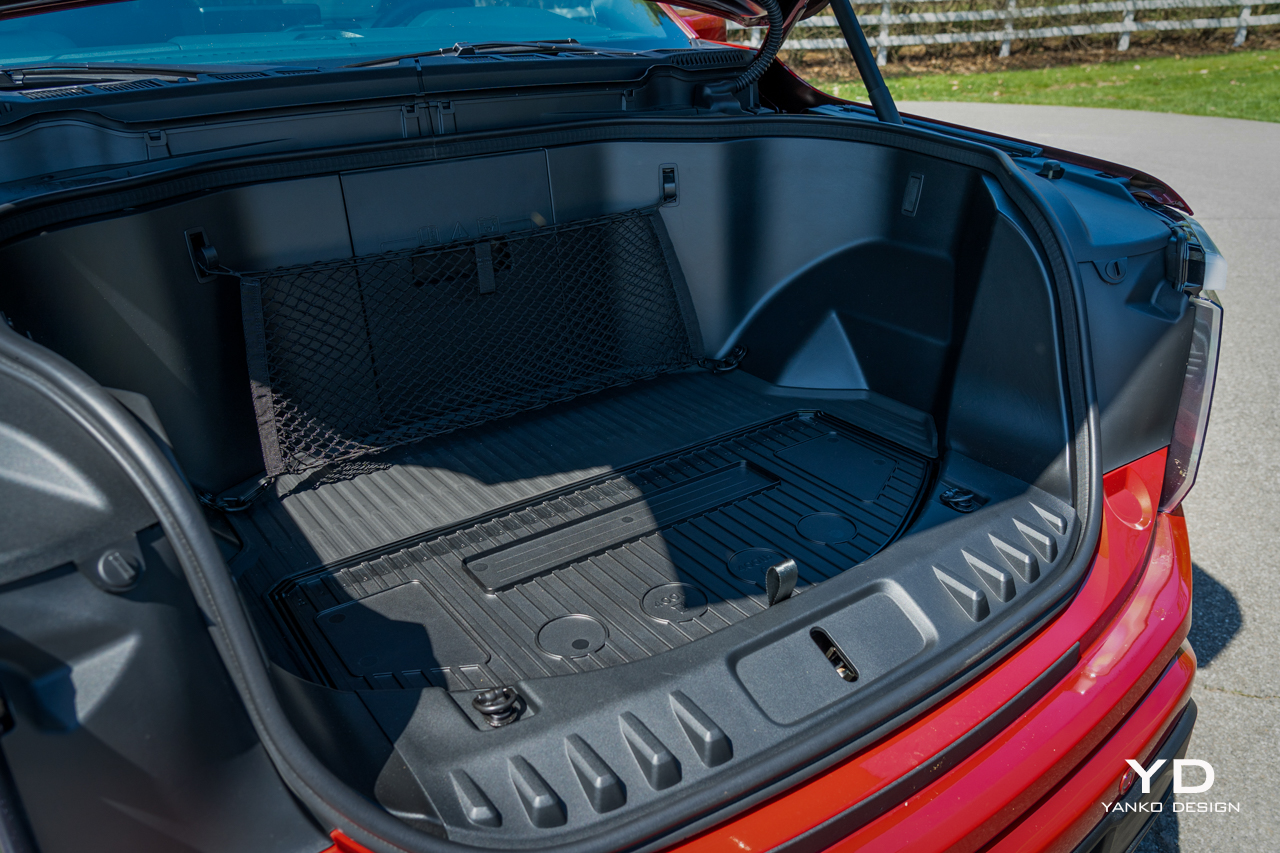
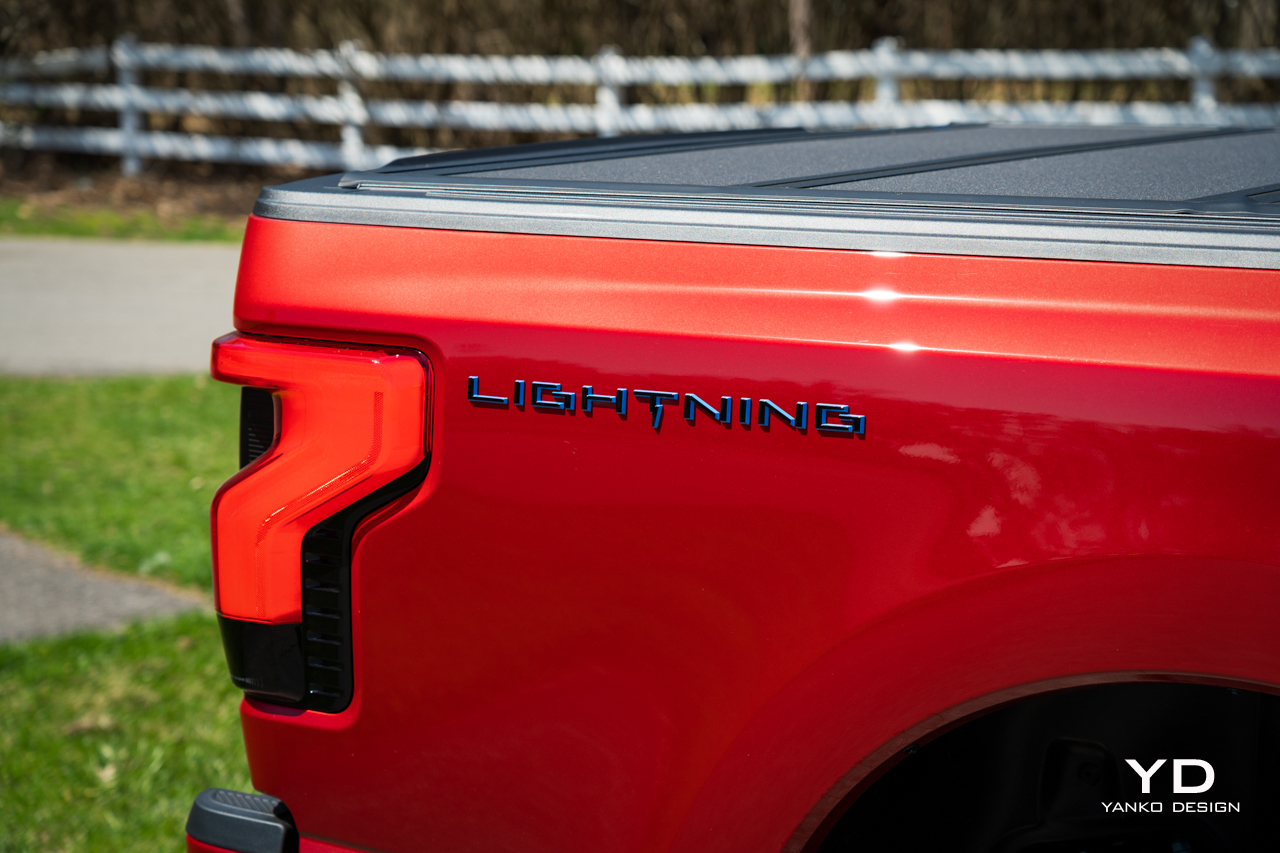
In terms of range, the F-150 Lightning with the larger battery pack is rated for an impressive 320 miles. This Platinum truck, with the bigger wheels and extra goodies, still rates 300 miles per the EPA.
Perhaps more importantly, the Lightning will serve up that battery capacity in many different ways, from the onboard USB-C ports to keep your laptop juiced to outlets in the bed and even more integrated in the frunk for charging tool batteries. Opt for the bidirectional Ford Charge Station Pro, and Ford estimates the Lightning can power an average home for three days.
Whether you use the Lightning as an emergency backup or a jobsite generator, the practicality is real. The one shame is charging. The Lightning tops out at 150 kW charging rate, which is undeniably slow considering the massive, 131 kWh battery pack here. That’s significantly slower than many other EVs that cost less and have far smaller packs.
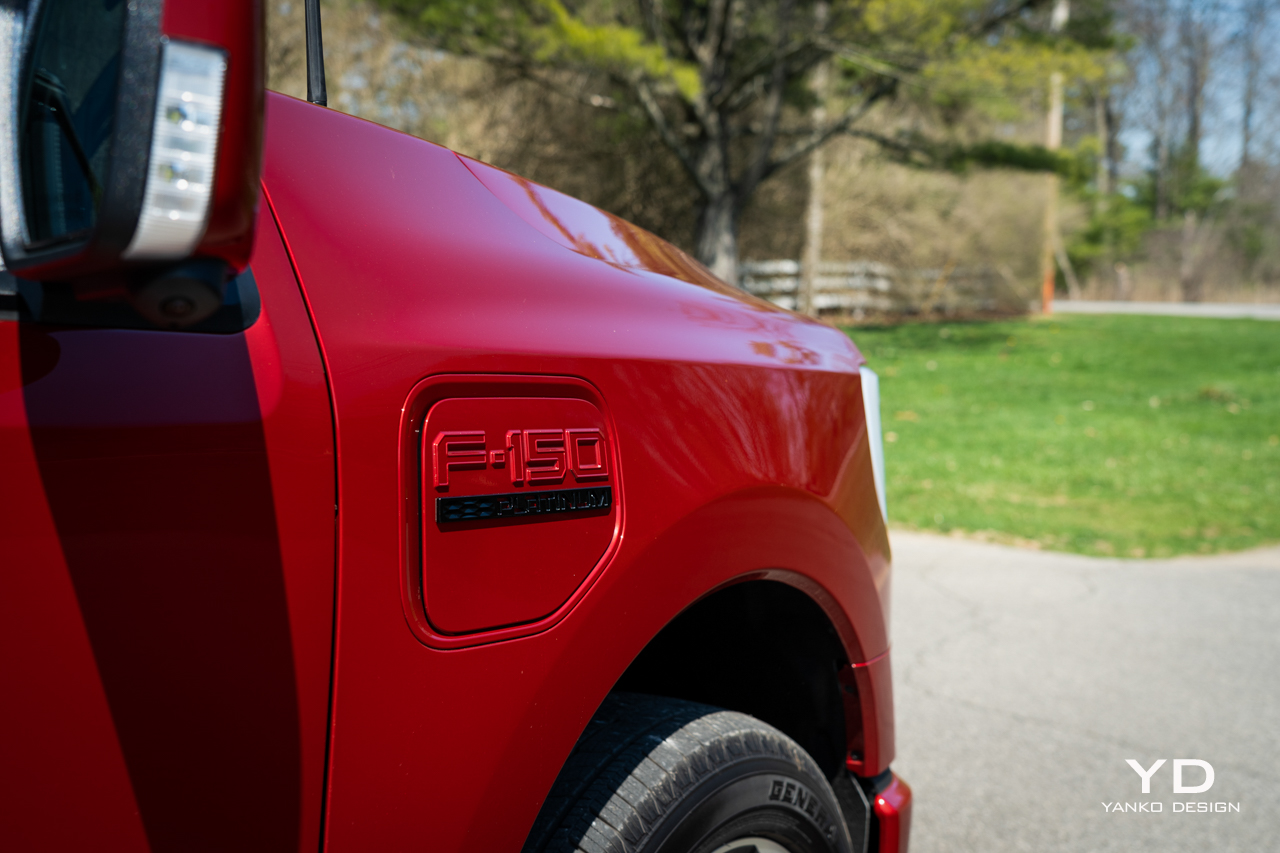
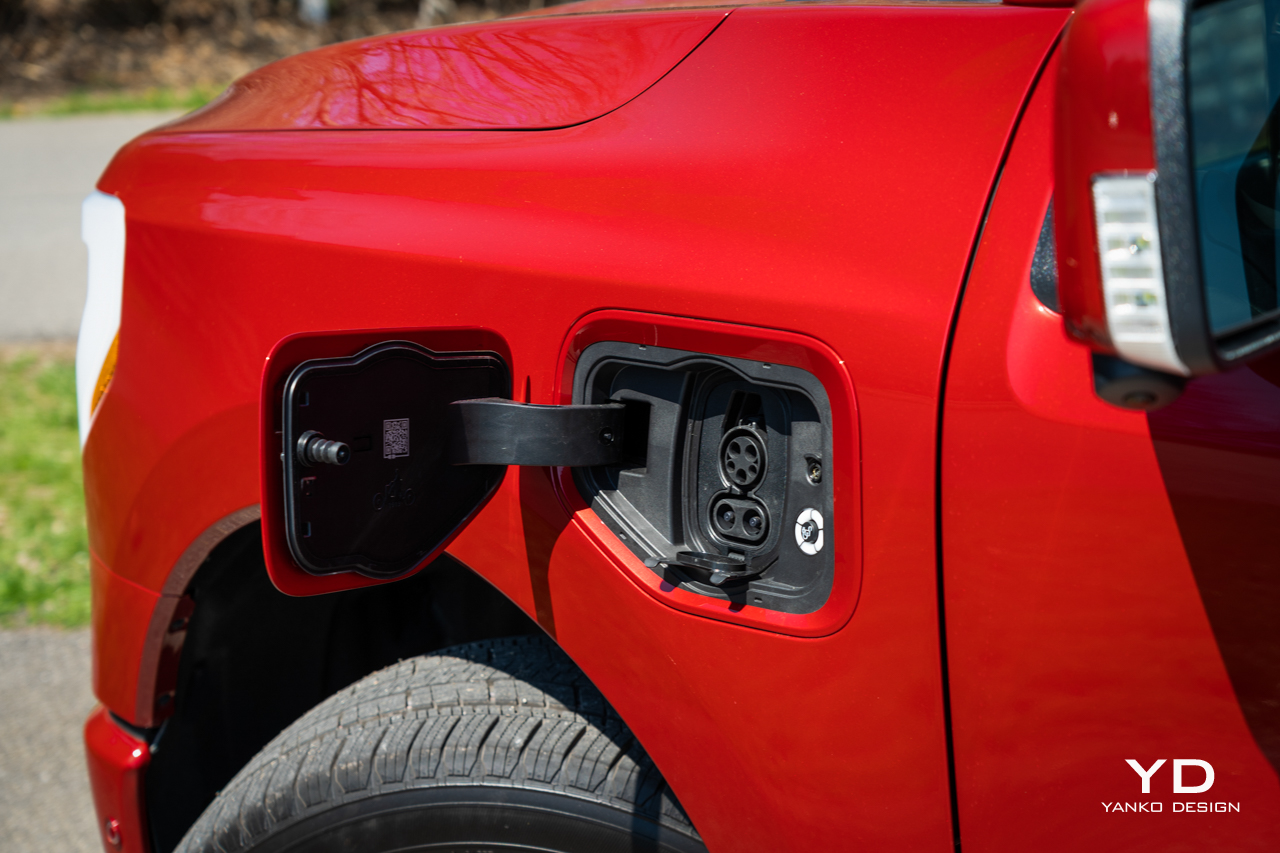
Pricing and Options
The F-150 Lightning you see here is the top-shelf Platinum trim, outfitted with 22-inch wheels, $495 for the Rapid Red Metallic paint, and $595 for the spray-in bed liner. However, a few things were deleted due to supply constraints, like the onboard scale, which knocked the price down by $650.
Total price, after a $1,895 destination charge is $100,609. That is one expensive truck.
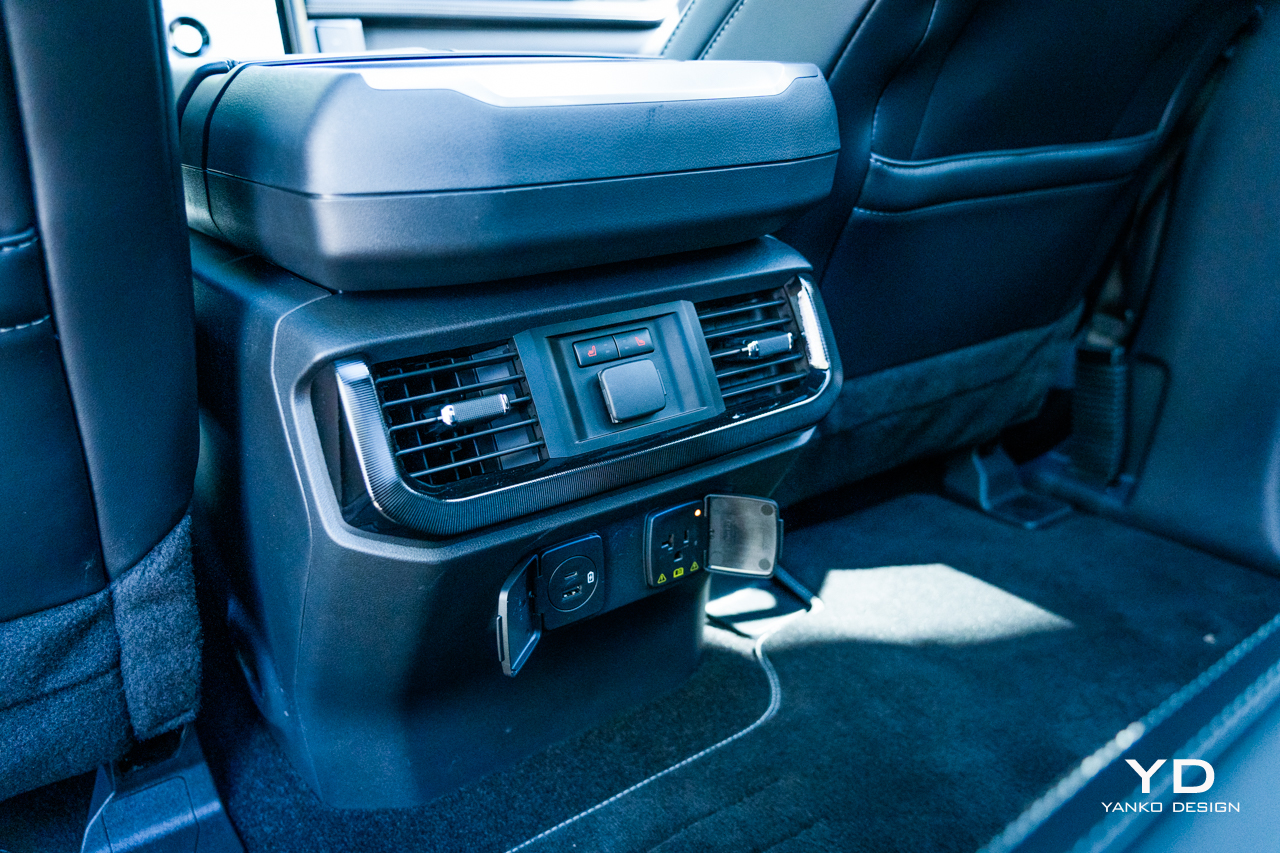
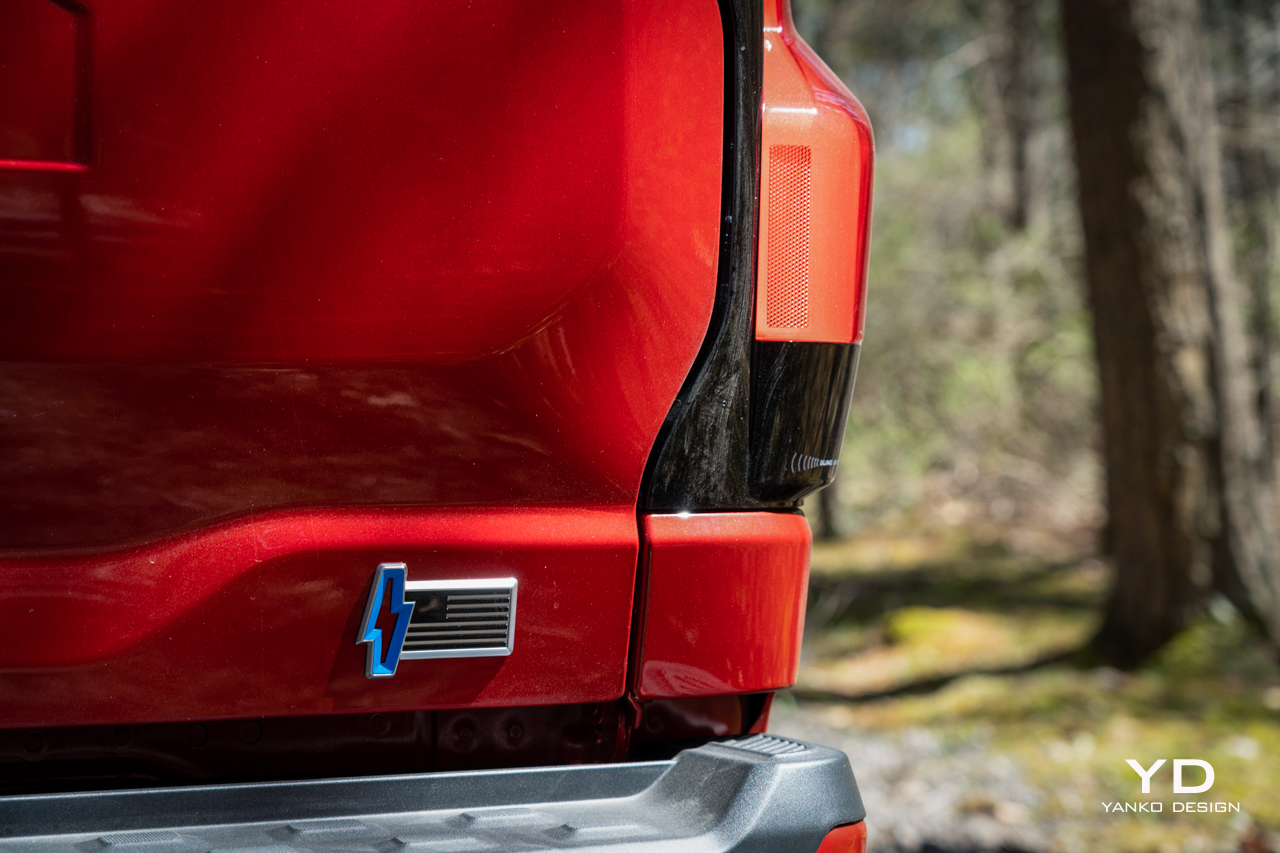
All those price hikes since the Lightning’s initial release are a shame. The Lightning was simply a compelling option for anybody looking to buy a truck. Now, buyers will have to do some math. For contractors, being able to power a job site without a generator rental will surely be compelling. For homeowners, using the truck as a whole-home power source helps make the price sting a little less.
And then of course there are the fuel savings over a traditional truck, which could be substantial.
The math is a little more complicated than before, but that doesn’t change the final result. The F-150 Lightning is a superb truck and a wildly versatile EV. I only wish it were smaller.
